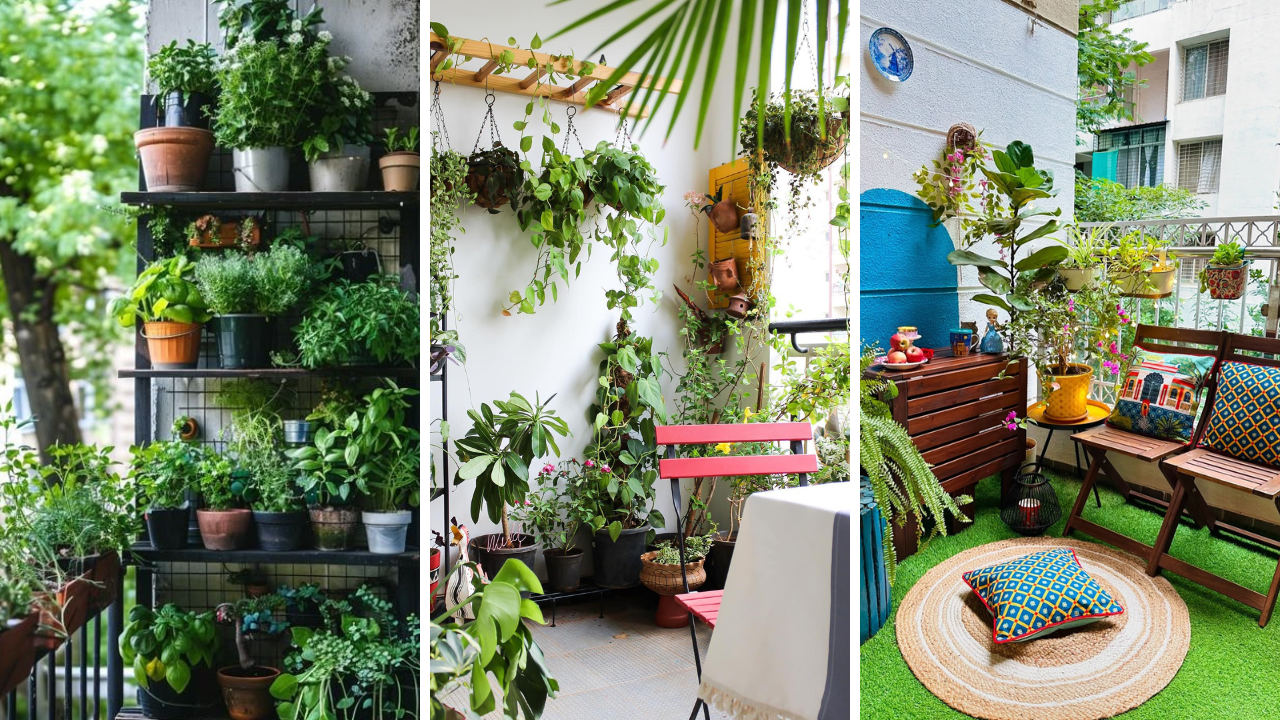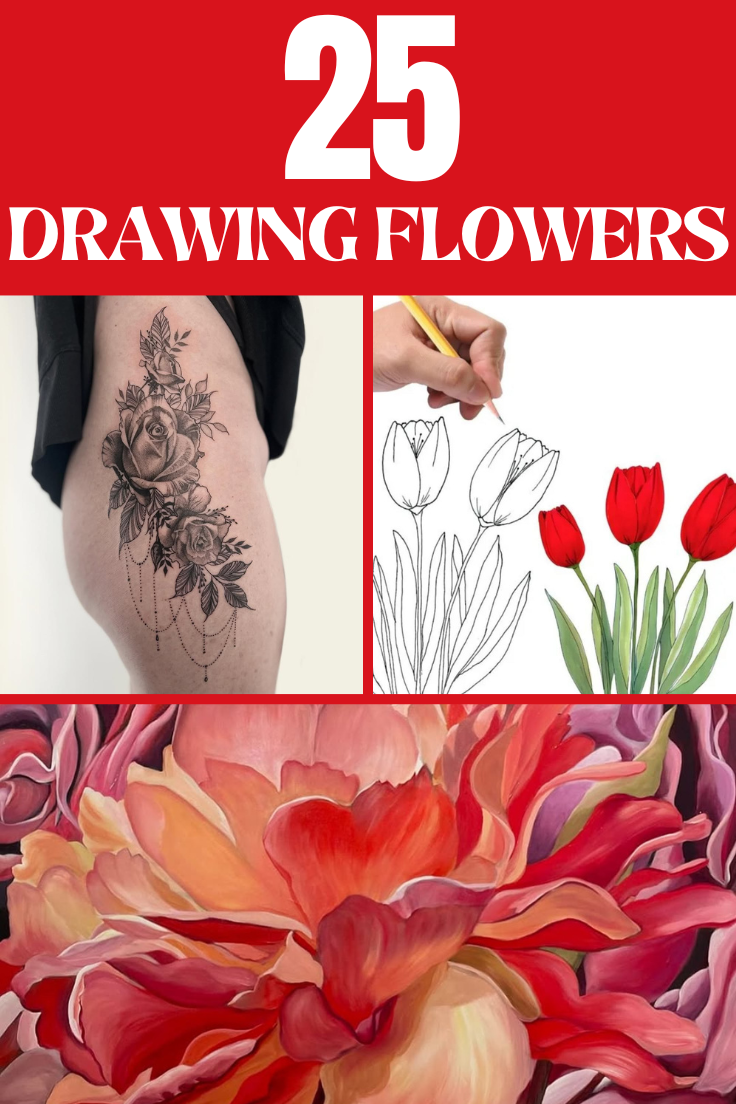
Drawing flowers is a creative and therapeutic activity that offers something for everyone, from beginners to experienced artists. Whether you’re looking for a relaxing hobby or aiming to refine your artistic skills, drawing flowers is an enjoyable and fulfilling endeavor. Flowers are rich in detail, vibrant in color, and diverse in form, making them a great subject for sketching. By focusing on different flowers, artists can practice various techniques, such as shading, outlining, and creating depth, all while capturing the unique essence of each bloom. Moreover, flower drawings make for beautiful, personal gifts, perfect for home decor, cards, or framing as a cherished memory for loved ones. In this list, we’ll explore 25 flowers that will inspire your artistic journey, offering a blend of classic favorites and unique specimens. Let’s dive into these gorgeous flower drawings you need to try right now, with some useful tips and recommendations to enhance your artistic toolkit.
1. Rose: The Timeless Classic
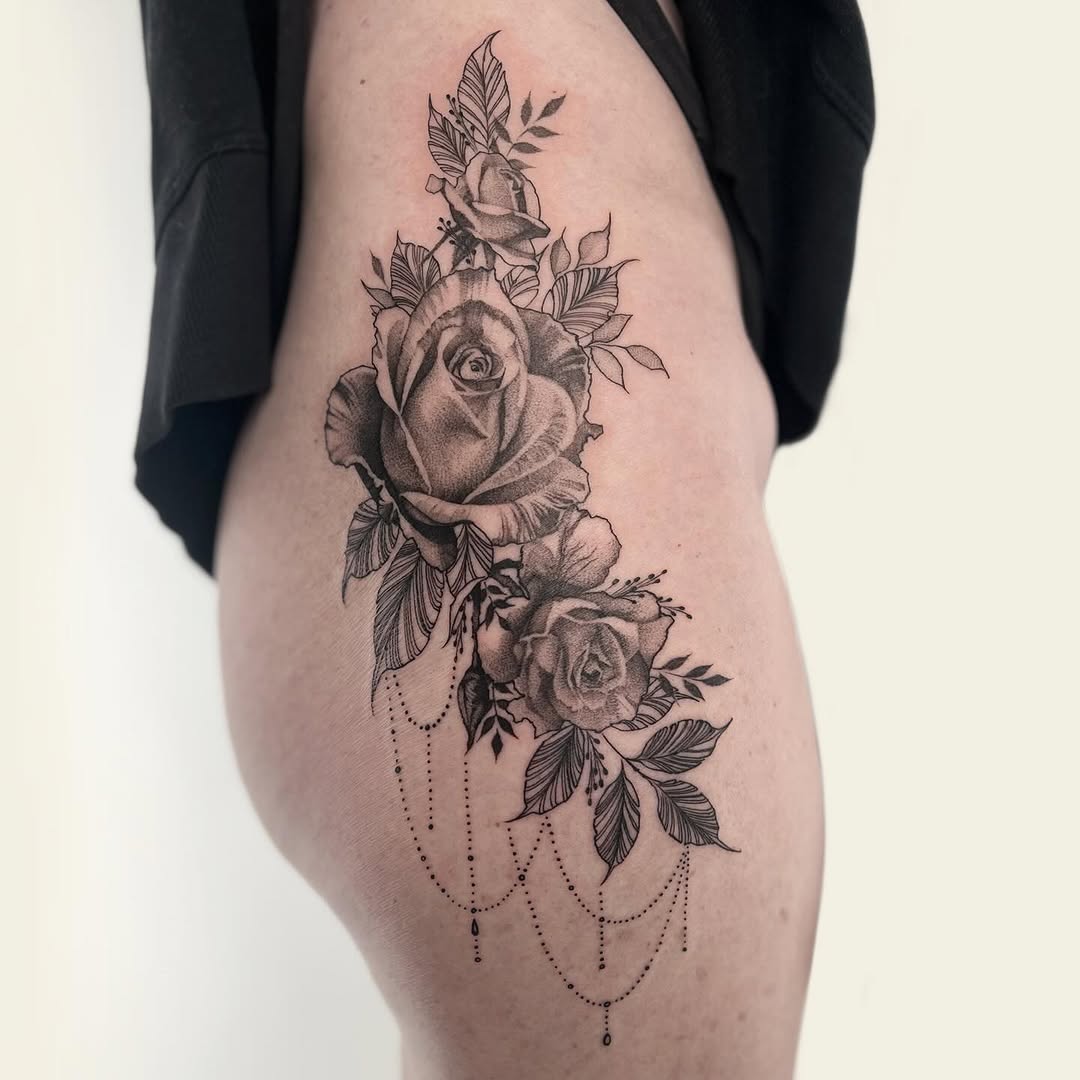
source @megarawiild
Roses have long been a symbol of love, beauty, and passion, making them one of the most beloved flowers in the world. Drawing a rose can be both challenging and incredibly rewarding. Its layered petals and elegant curves offer a chance to practice creating intricate details, while its various shades of red, pink, and white give you the opportunity to experiment with color blending and shading techniques. Whether you choose to sketch a single rose or a full bouquet, this flower can be adapted to your own unique style. The rose’s timeless appeal also makes it a great choice for a gift, especially when you want to create something personal and meaningful for someone special.
2. Tulip: Simple Yet Elegant
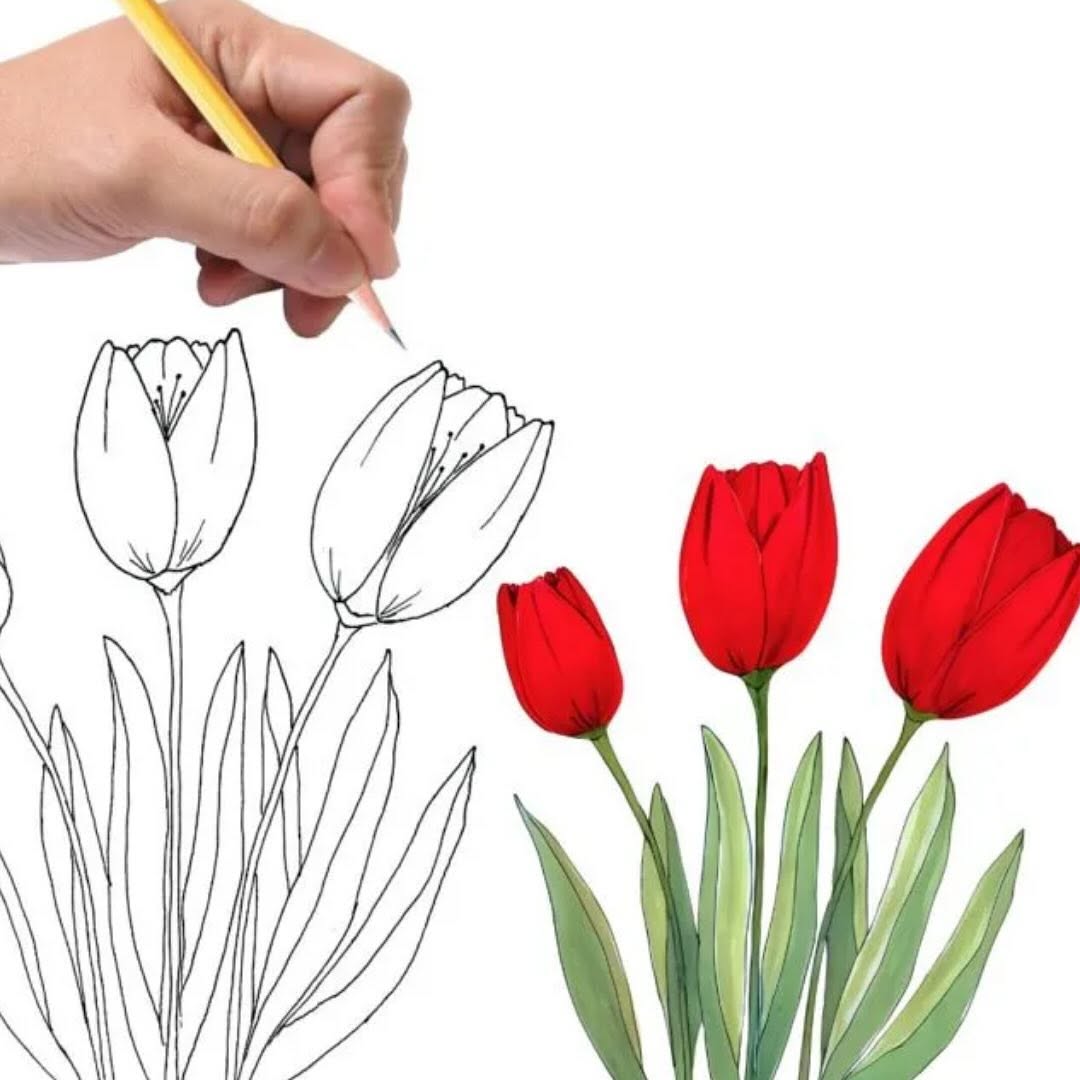
source @feeling.nifty
Tulips are the epitome of elegance and simplicity. With their smooth, clean lines and gentle curves, tulips are an excellent choice for beginner artists looking to practice their flower-drawing skills. The shape of the petals is relatively straightforward, allowing you to focus on perfecting the subtleties of shading and color. Despite their simplicity, tulips come in an array of vibrant colors—bright yellows, bold purples, and soft pastels—which provide plenty of room to experiment with various techniques. Whether drawn in a minimalist style or with more detailed linework, tulips never fail to convey a sense of grace and beauty. They also make a lovely addition to any greeting card or decorative artwork.
3. Lily: Bold and Graceful
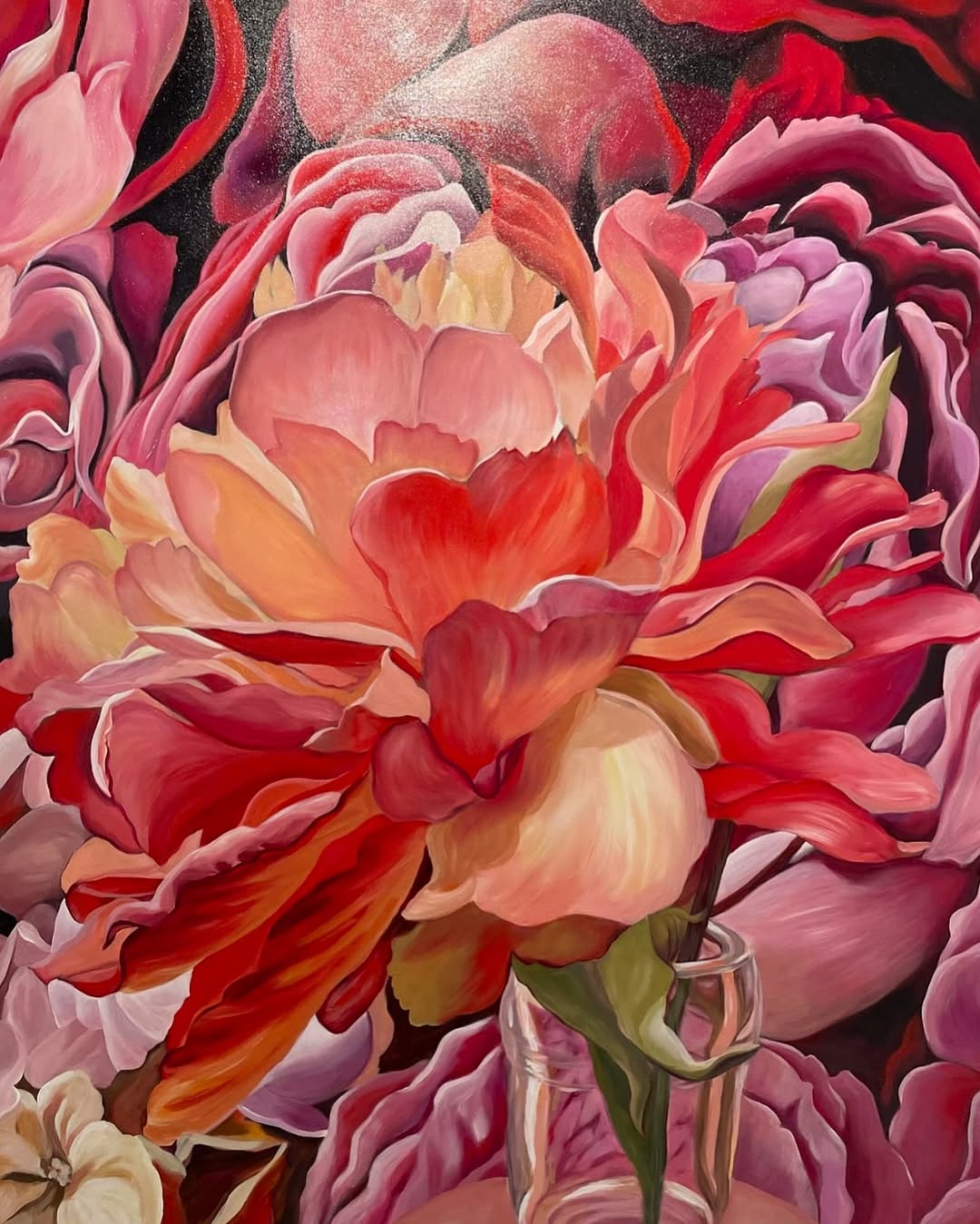
source @summergracegallery
The lily is a bold yet graceful flower, known for its striking shape and fragrant aroma. When drawing lilies, you’ll need to pay attention to their long, narrow petals and the way they elegantly curve outward. The lily’s unique form provides an opportunity to practice drawing both the individual details of the petals and the overall flow of the flower. Its deep central stamens and surrounding petals allow you to explore shadow and depth, creating a three-dimensional effect on paper. Whether you’re working with a single lily or a bunch, this flower offers ample chances to experiment with fine lines, shading, and even the use of color gradients. Lily drawings often evoke feelings of purity and elegance, making them perfect for sophisticated art pieces or special gifts.
4. Sunflower: A Burst of Happiness
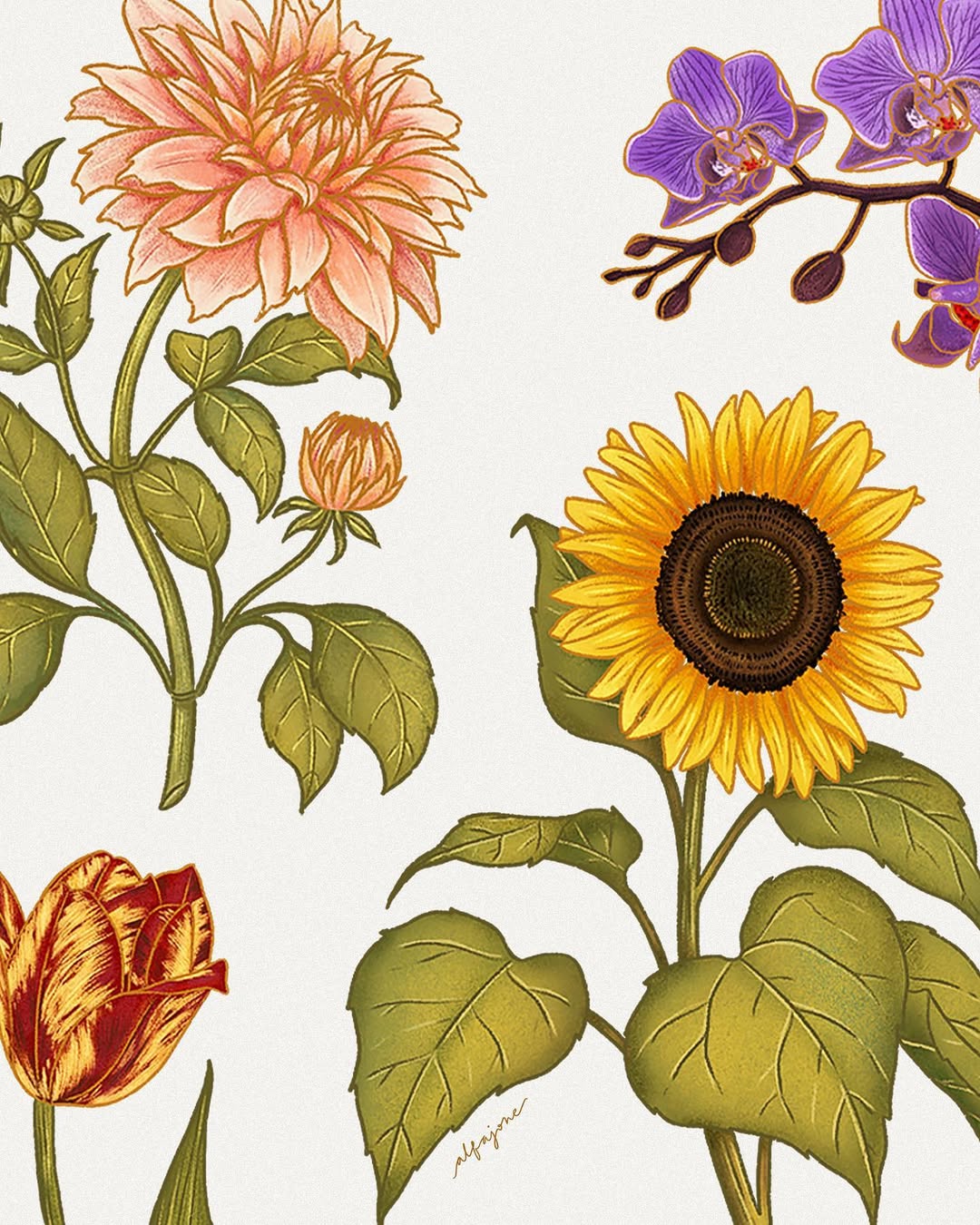
source @alfajone
Sunflowers are the definition of warmth and happiness. Their large, round, golden petals and bright yellow center make them instantly recognizable and a joy to draw. The sunflower’s large structure presents a great opportunity for practicing scale and proportion, while the bright, radiant color invites experimentation with bold and vibrant hues. One of the most satisfying aspects of drawing sunflowers is capturing the intricate details of the seeds in the center. Whether you decide to go for a realistic depiction or a more stylized version, sunflowers are the perfect flower for practicing bold color contrasts, especially with the play between the bright yellow petals and the rich brown center.
5. Daisy: Cheerful and Easy
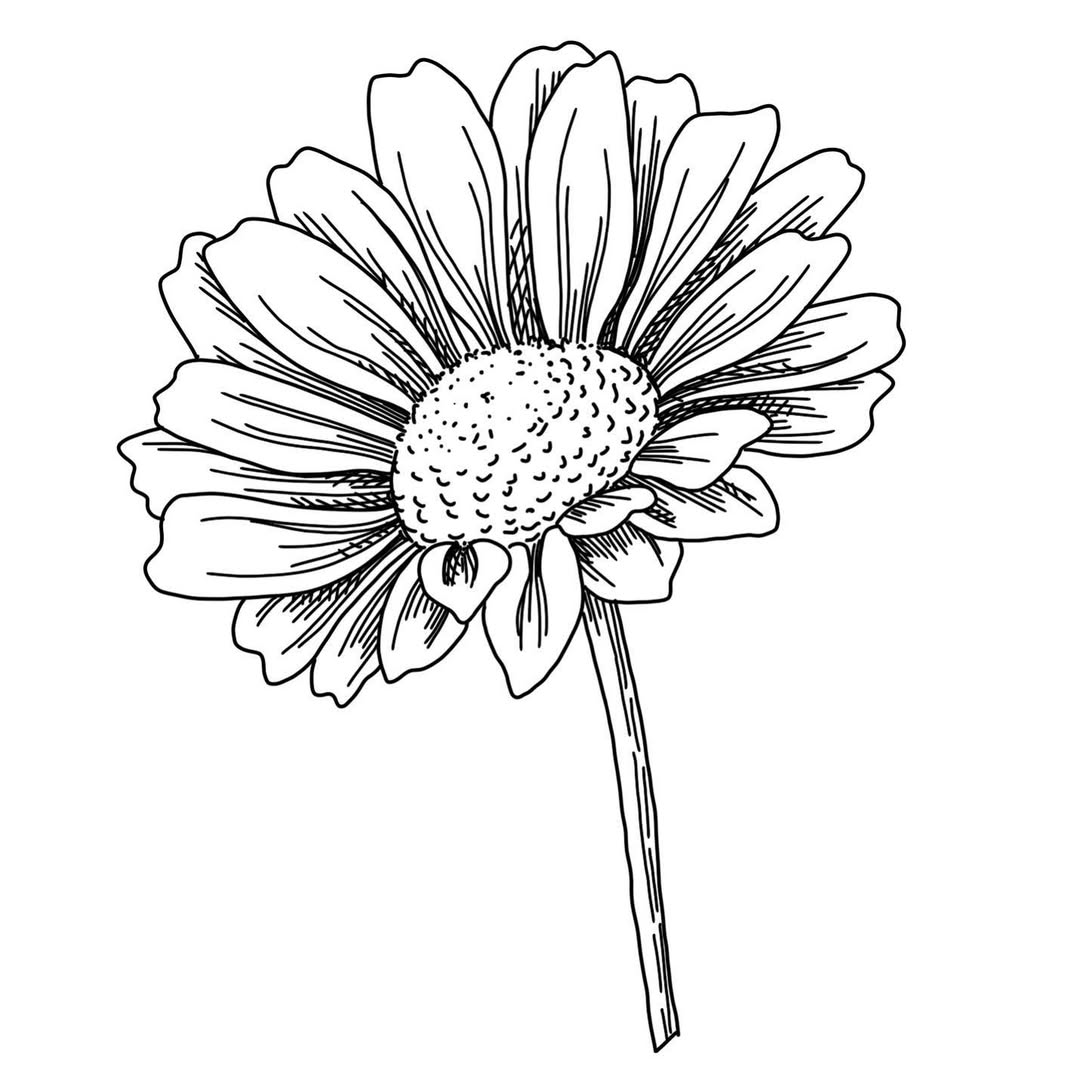
source @aprilellendesign
The daisy, with its simple yet charming appearance, is one of the easiest flowers to draw. The daisy’s clean, symmetrical shape, consisting of a round central disc surrounded by elongated petals, provides a great starting point for beginners. Drawing daisies allows you to focus on mastering basic shapes and symmetry, while the vibrant, often contrasting colors of the petals and the central disc provide a fantastic opportunity to practice color blending and shading. Daisies convey a sense of innocence and cheerfulness, making them ideal for adding a playful touch to your drawings. Whether you choose to draw a single daisy or a bouquet, their simplicity allows for creative freedom and personalization.
6. Orchid: Exotic and Detailed
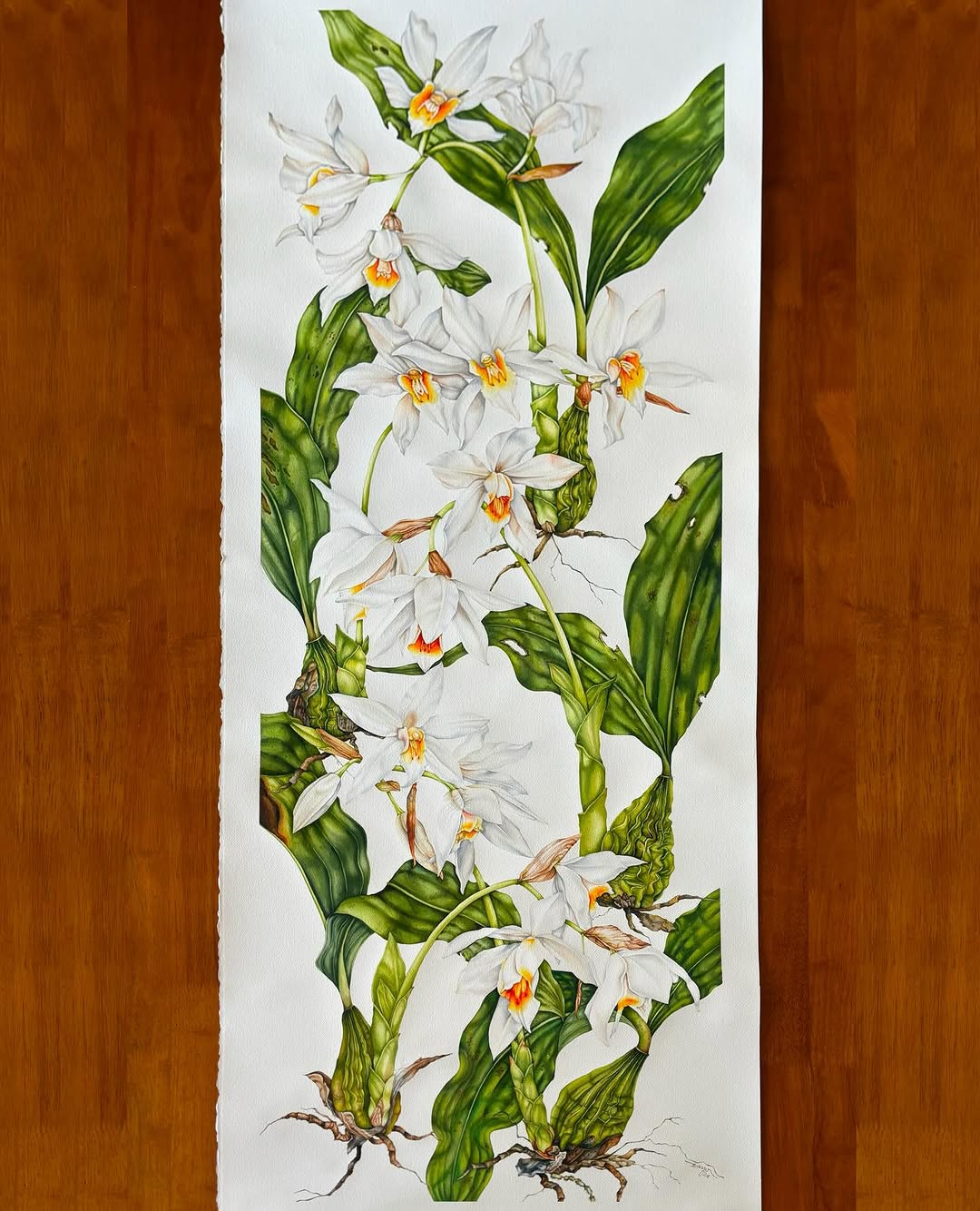
source @sayonisi
Orchids are some of the most detailed and exotic flowers in the world, making them an excellent challenge for intermediate or advanced artists. With their intricate petal structure and symmetrical shape, orchids require precision and an eye for detail. Unlike some other flowers, orchids have unique shapes and markings that add complexity to your drawings. The curved lines, delicate veins, and layers of petals present an opportunity to practice fine details and shading techniques. Orchids also come in a wide range of colors, from soft whites and purples to bold pinks and yellows, allowing you to experiment with color gradients and contrasts. Drawing orchids will not only improve your technical skills but also reward you with a stunning, intricate piece of art.
7. Peony: Full and Fluffy
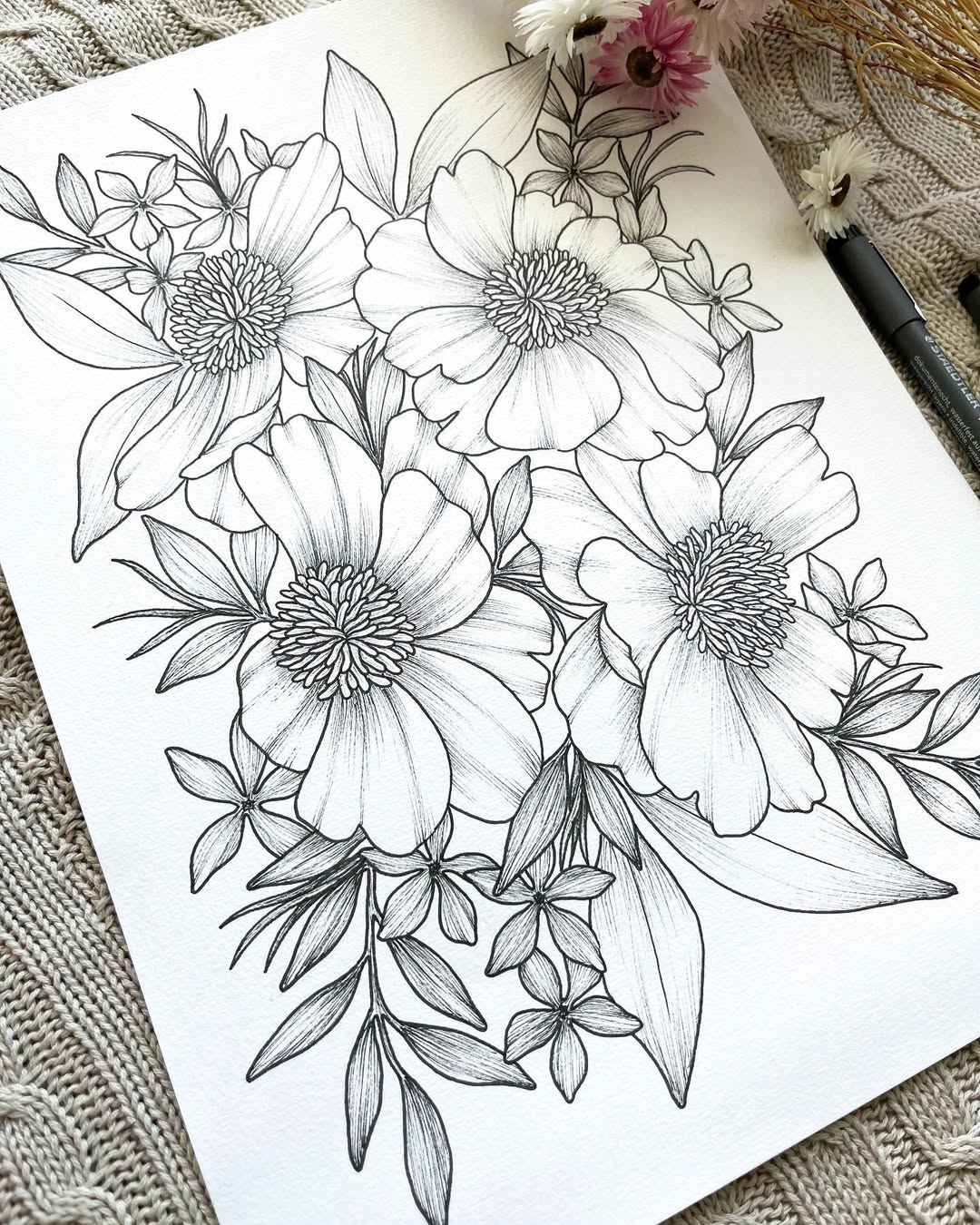
source @essjay_florals
Peonies are beloved for their lush, full-bodied blooms, making them a perfect flower for drawing. Their petals are soft and fluffy, overlapping in layers that create a voluminous appearance. Drawing peonies allows you to practice creating depth and dimension by carefully rendering each petal and how they interact with one another. The challenge lies in capturing the texture of the petals—whether they appear silky and smooth or slightly ruffled. The peony’s subtle color palette, often consisting of pinks, whites, and purples, offers plenty of opportunities to experiment with blending techniques. The sheer size and beauty of the peony make it an excellent subject for any artist looking to enhance their flower-drawing skills.
8. Cherry Blossom: Graceful and Soft
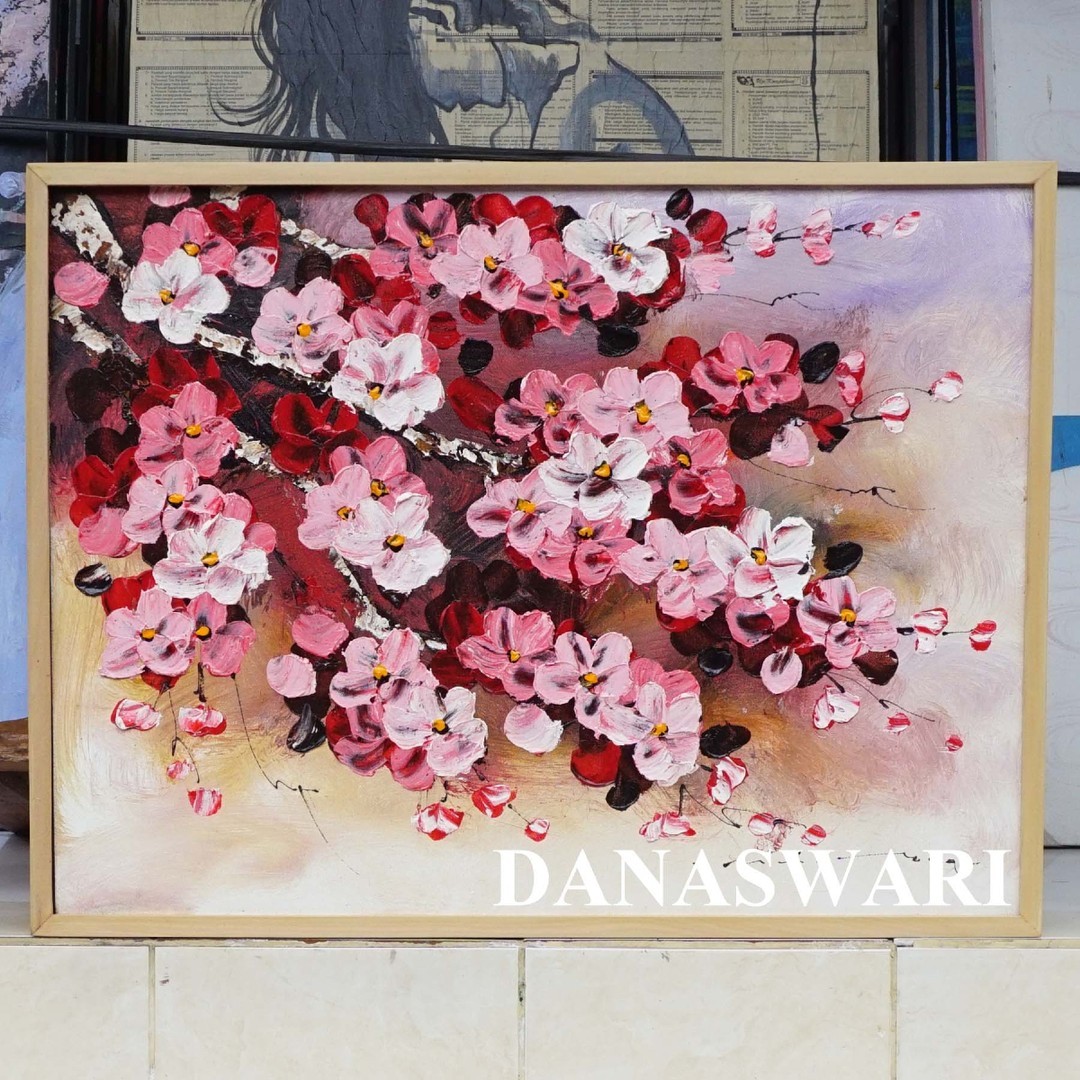
source @danaswaripainting
Cherry blossoms are a delicate and beautiful flower often associated with spring and renewal. These flowers have a soft, almost ethereal quality, with petals that appear to gently flutter in the breeze. Drawing cherry blossoms offers a wonderful opportunity to practice soft shading and fine line work, as the petals are often thin and light. The subtle color transitions between the pale pinks and whites create a calming atmosphere in the drawing. Cherry blossoms are also known for their fleeting nature, symbolizing the transient beauty of life, making them a deeply meaningful subject for those looking to capture both beauty and emotion in their artwork.
9. Violet: Small and Detailed
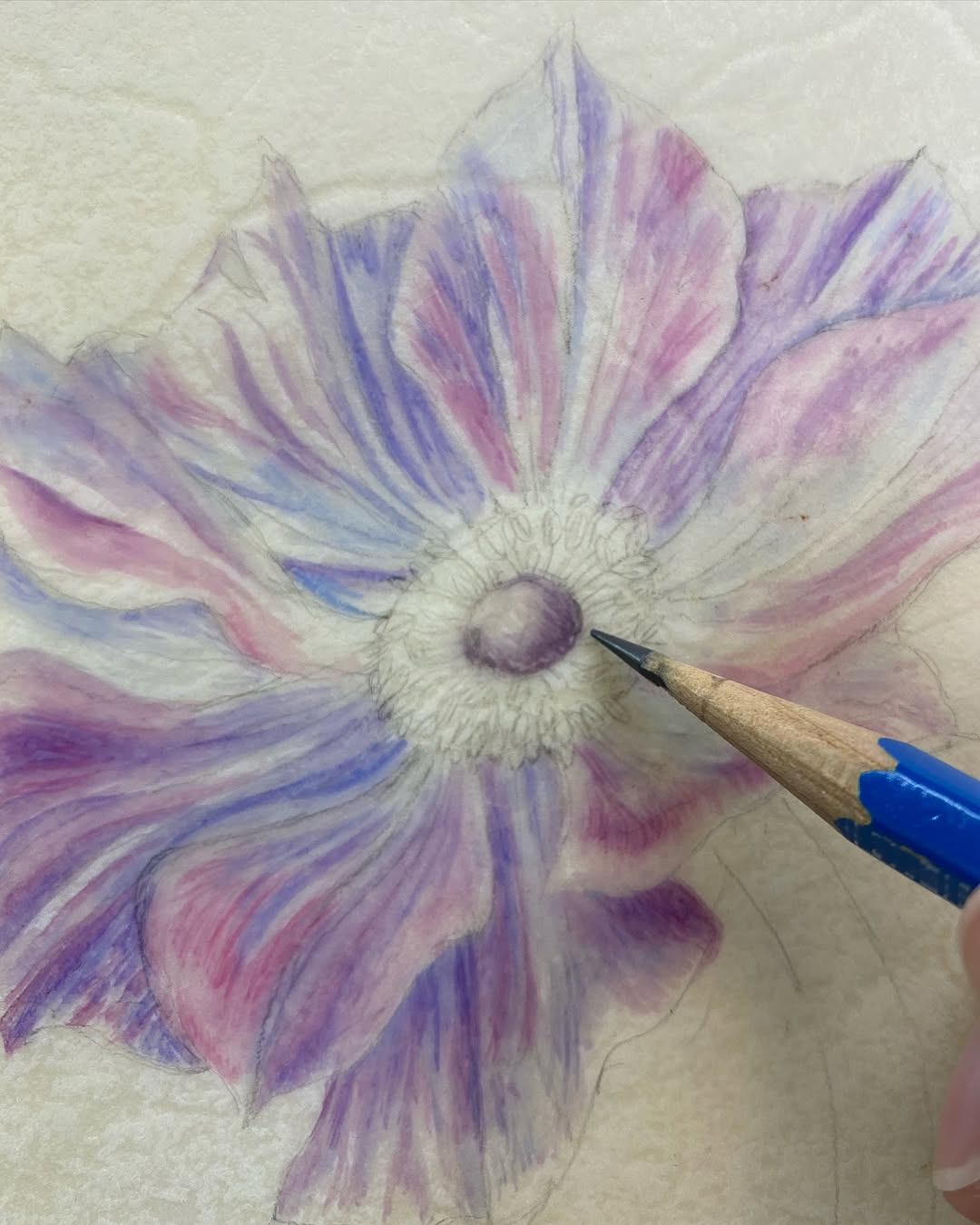
source @cherylmccaffrey
Violets are small, yet their delicate structure and rich color make them a captivating subject for artists. These flowers offer an excellent opportunity to practice fine details and precision, especially in the way their petals curve and overlap. The deep purple or blue shades of the violet add complexity to the drawing, allowing you to explore various shading techniques. Drawing violets can be a rewarding challenge for intermediate artists, as you work to capture the subtle details of the petals, stems, and leaves. Violets also make lovely gifts, especially when paired with other small flower drawings or incorporated into botanical designs.
10. Lavender: Soft and Fragrant
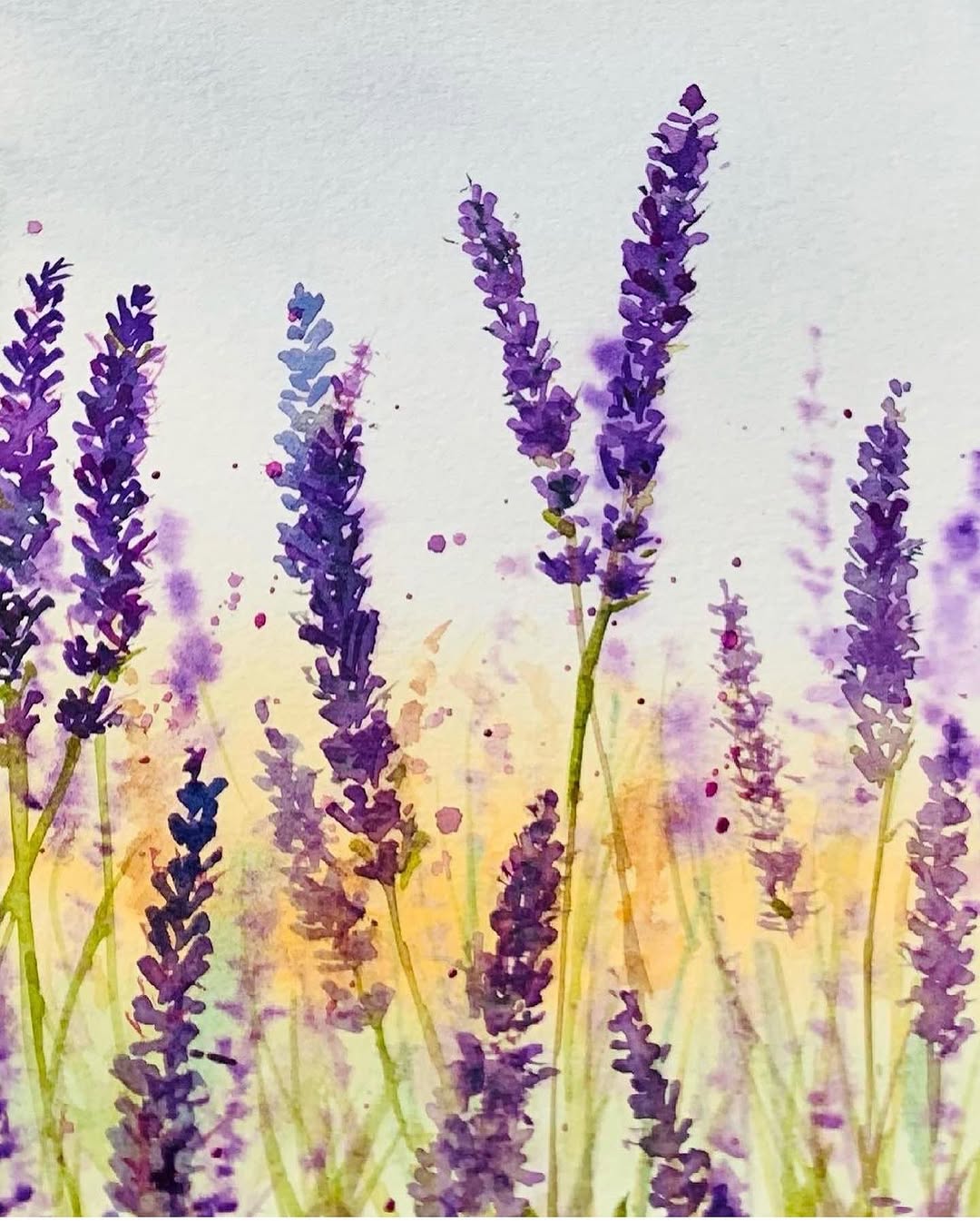
source @color.me.water
Lavender is a fragrant, calming flower known for its thin, long stems and small, purple blooms. Drawing lavender gives you a chance to practice working with fine, delicate lines as you capture the long, slender stems and tiny clusters of flowers. Lavender’s subtle shading and soft texture require careful attention to detail, making it a great subject for practicing depth and contrast. The soft purple color palette provides a serene atmosphere, which can be further enhanced with gentle shading techniques. Lavender is perfect for creating soothing, tranquil artwork that evokes a sense of calm and relaxation, making it a wonderful addition to any home decor or gift.
11. Magnolia: Bold and Beautiful
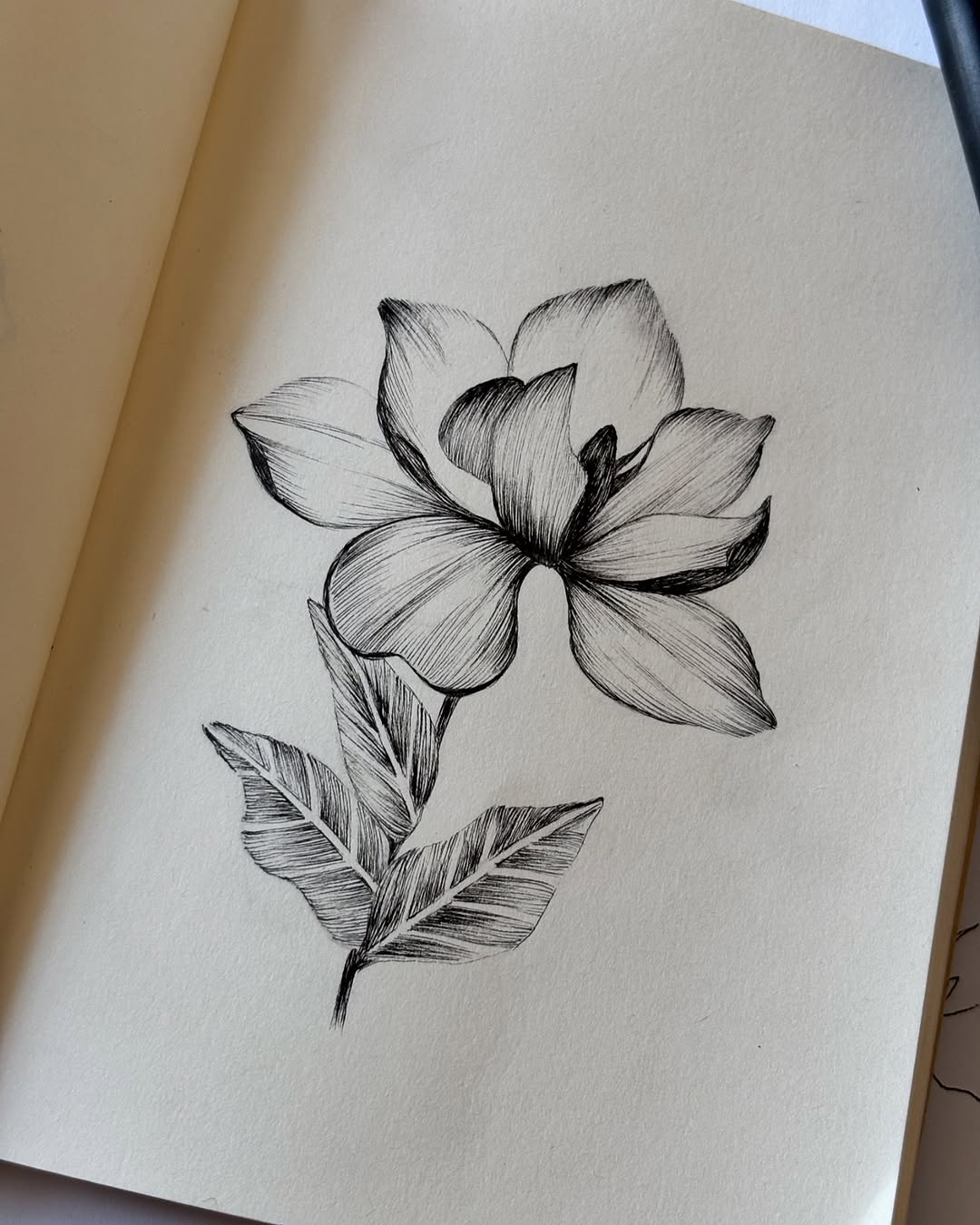
source @flowersbysi
Magnolias are large, bold flowers with large petals that make a dramatic statement in any drawing. These flowers often have a symmetrical structure with wide, smooth petals that open outward in a stunning display. Drawing magnolias gives you an opportunity to practice shading and creating depth, particularly in the way light and shadows fall on the large petals. The bold nature of the magnolia flower allows you to experiment with contrast and tonal shifts, especially when highlighting the deep central stamen. Magnolias make a beautiful, sophisticated choice for a floral drawing, whether you’re creating a detailed representation or a more stylized version.
12. Tulip Tree Flower: Exotic and Intricate
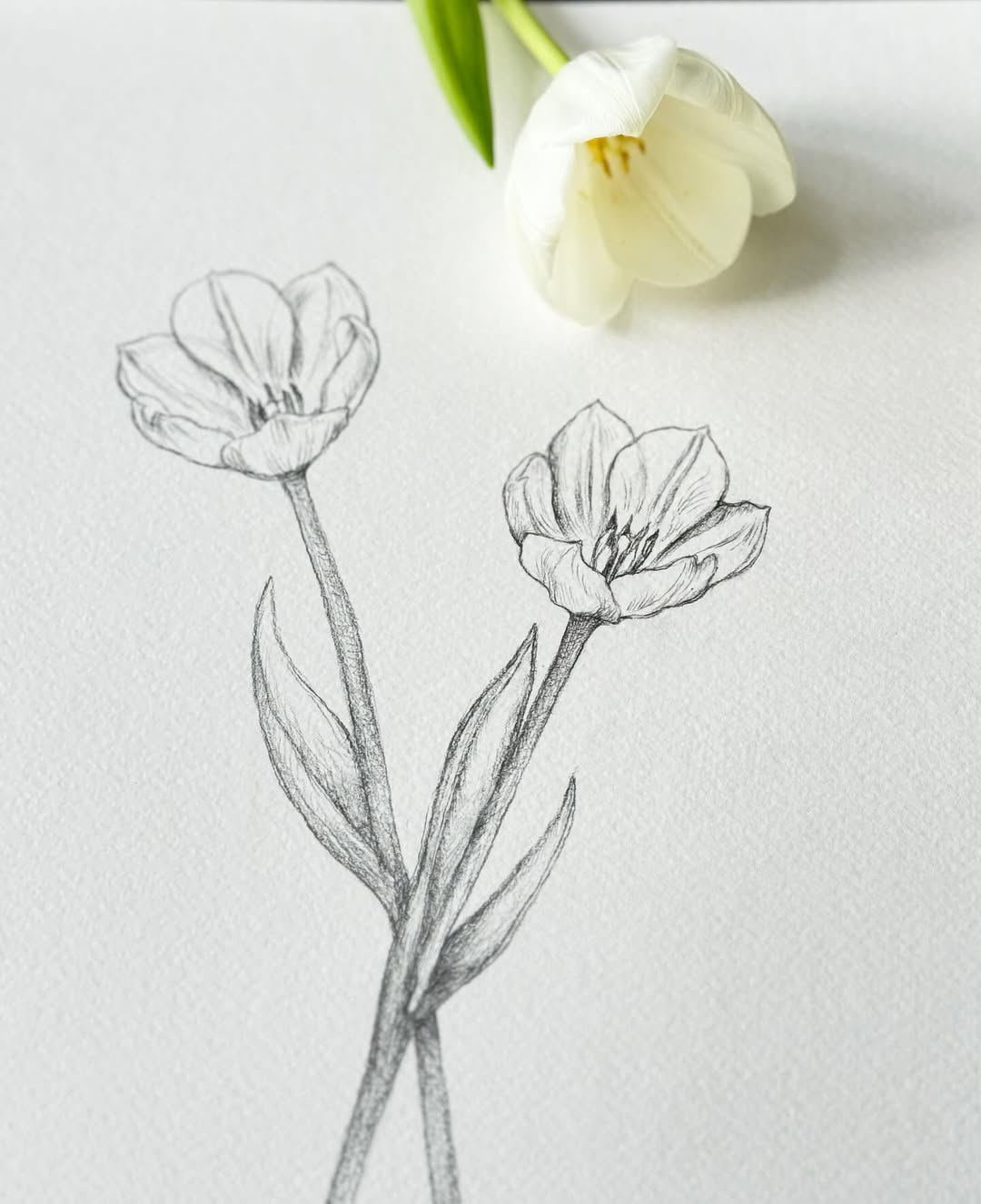
source @floraldesignsbysofie
The tulip tree flower is an exotic, often overlooked beauty that combines the shapes of both tulips and magnolias. With large, smooth petals and intricate details, drawing this flower requires a keen eye for symmetry and precision. The complexity of the flower’s layers offers an opportunity to refine your shading and texturing skills. Tulip tree flowers also have a soft color palette, usually in shades of yellow, green, or orange, which provides a chance to experiment with blending and gradient techniques. Its unique appearance makes it a great choice for anyone looking to explore less common flower drawings.
13. Hydrangea: Lush and Clustery
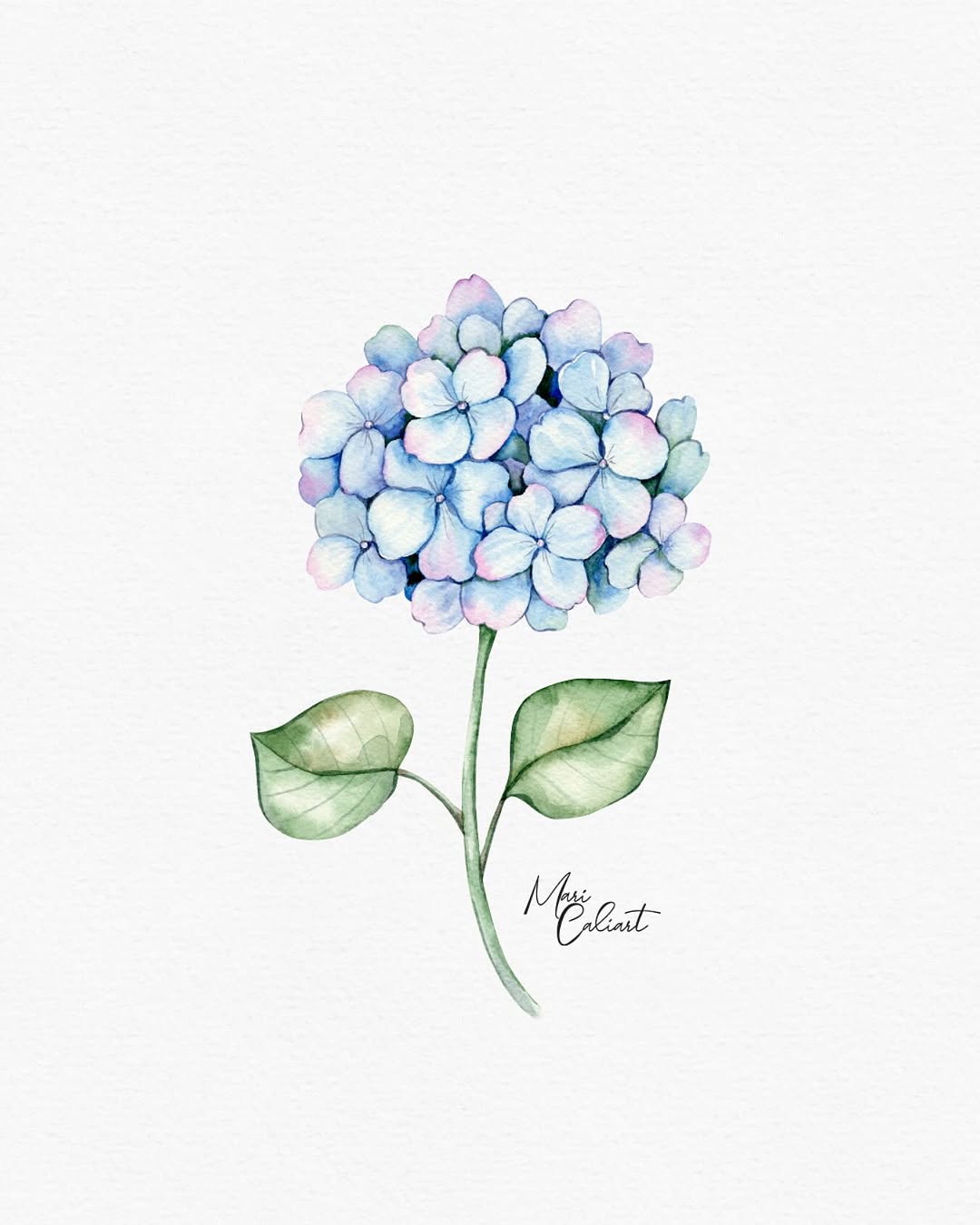
source @mari_caliart
Hydrangeas are known for their voluminous, clustered flowers that come in a variety of colors, including blues, pinks, and purples. The complexity of a hydrangea’s structure can be a challenge for artists, as it requires you to capture the density of the petals and their varying sizes. Drawing hydrangeas allows you to experiment with texture and depth, particularly in the way the petals overlap and form clusters. Their bold colors and intricate structure make them a fantastic subject for anyone looking to refine their skills in drawing detailed, textured floral compositions.
14. Poppy: Bold and Striking
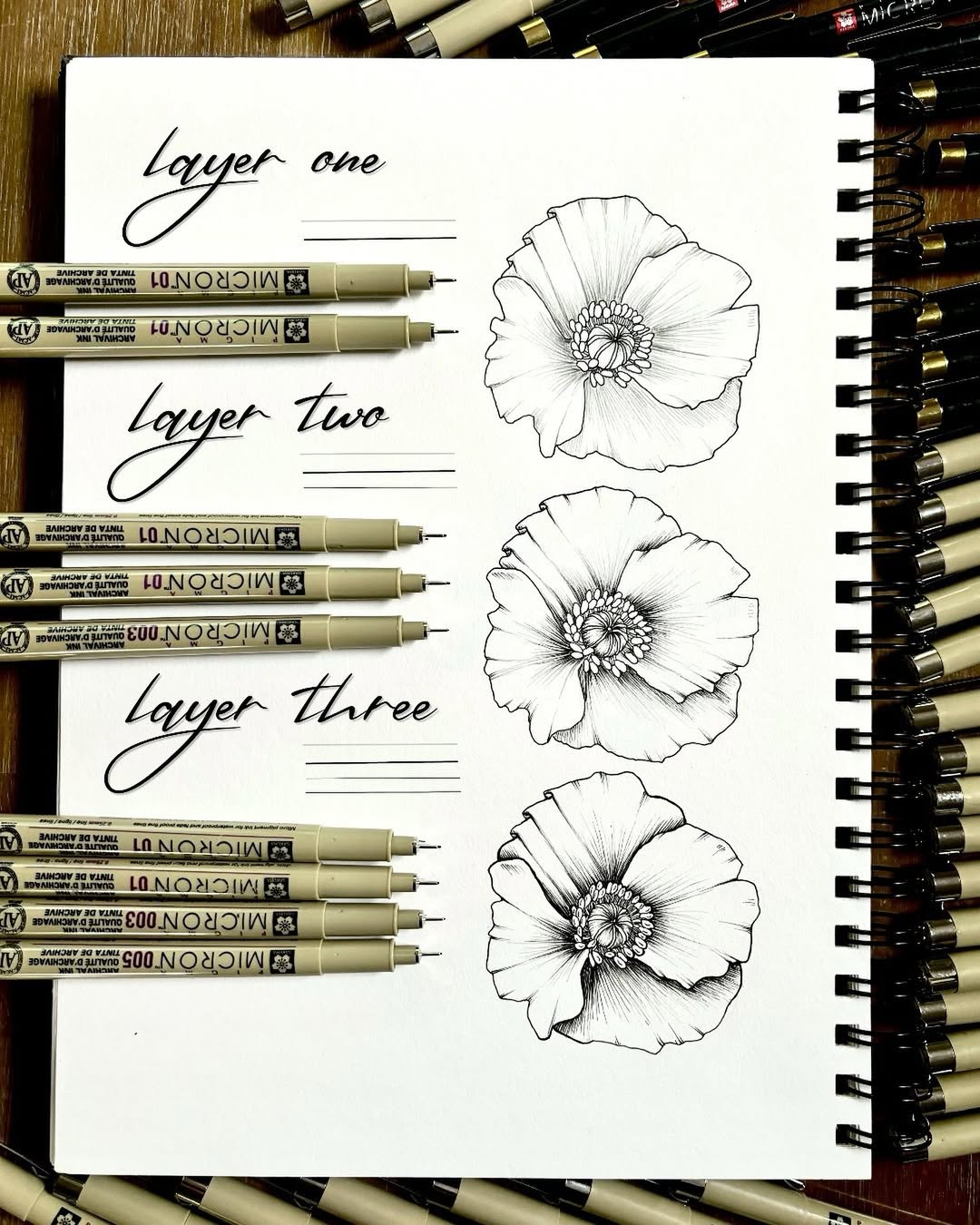
source @sakuraofamerica
Poppies are bold, striking flowers with a vibrant color palette of reds, oranges, and yellows. Their large, round petals and dark central seed pod make them a unique subject for drawing. The contrast between the bright petals and the dark center offers an excellent opportunity to practice shading and creating bold contrasts in your artwork. Poppies have a strong visual impact, making them perfect for those who want to create dramatic, eye-catching designs. Whether you’re drawing a single poppy or a field of them, these flowers allow you to explore both line work and shading techniques, producing a beautiful and expressive piece of art.
15. Iris: Unique and Intricate
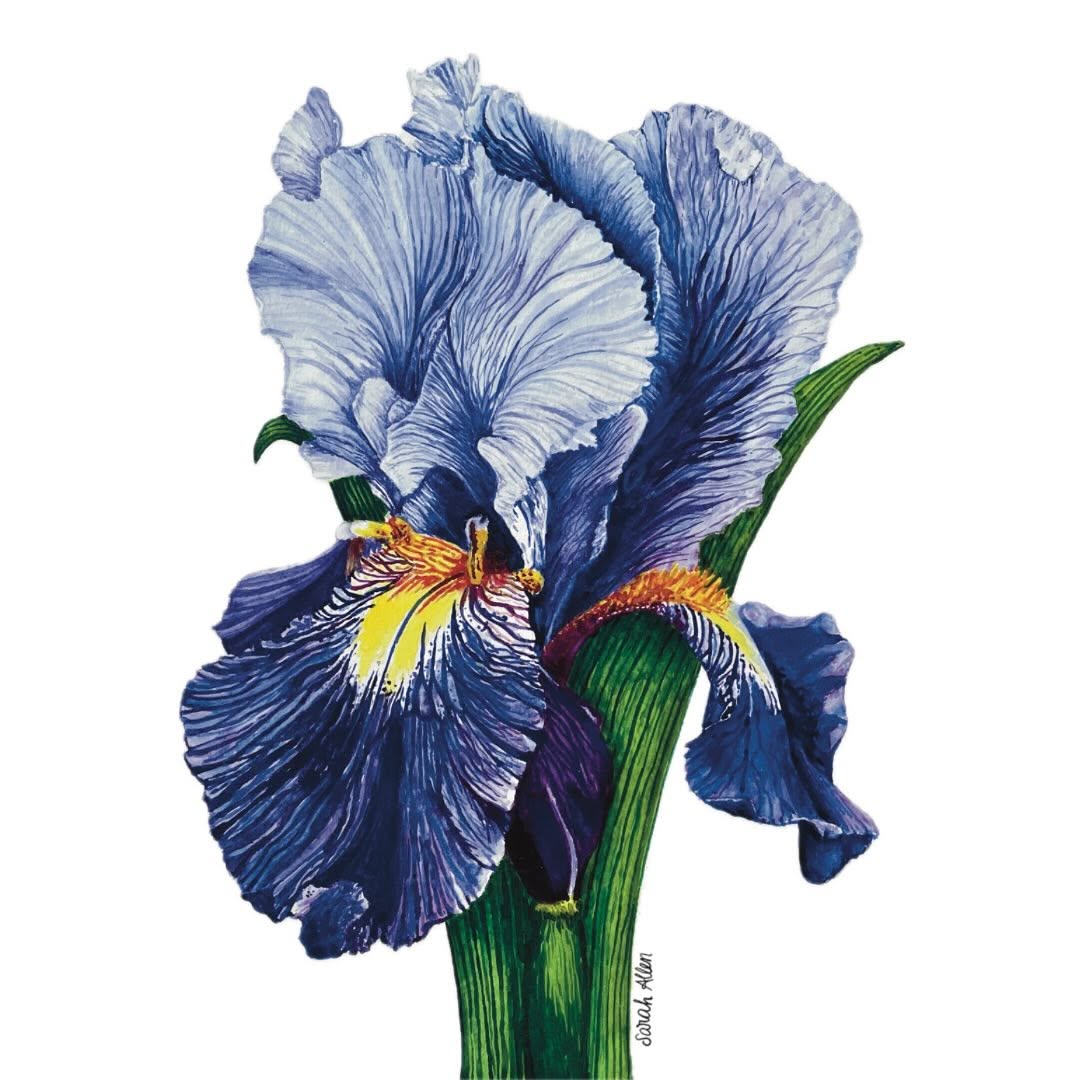
source @artbysarahallen
Irises are flowers with unique shapes and intricate details, often featuring tall, slender petals that fold and curl in various directions. Drawing irises requires patience and precision, as you’ll need to capture the complex structure of the petals and the subtle transitions of color. These flowers can range in color from deep purples to blues, yellows, and whites, offering ample opportunities to experiment with color gradients and shading techniques. Irises are a beautiful flower to add to your collection, as they offer both a challenge and a reward for artists looking to enhance their floral drawing skills.
16. Camellia: Romantic and Detailed
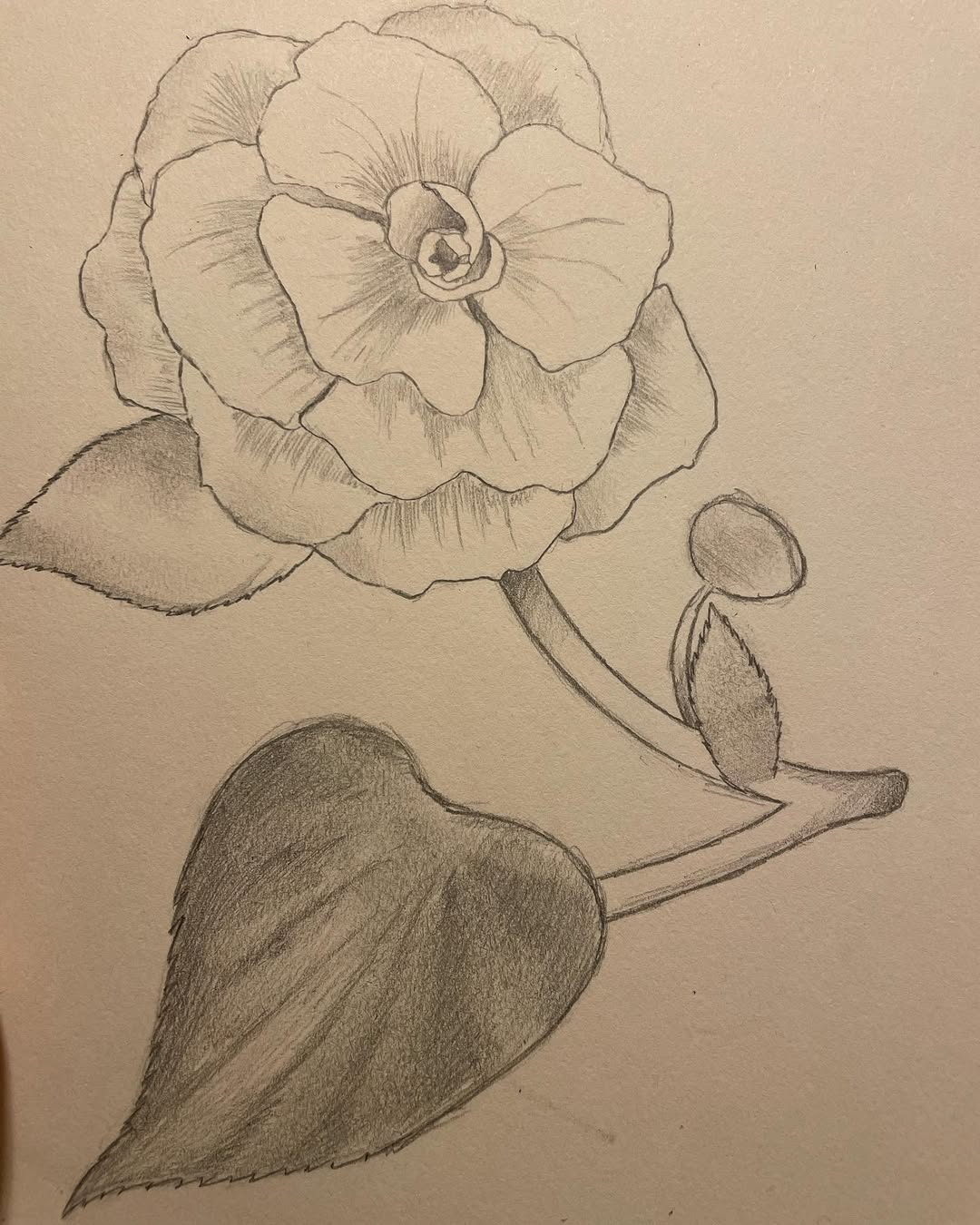
source @rafarod_art
The camellia is a romantic, elegant flower often associated with love and beauty. Its thick, waxy petals overlap in layers, creating a plush, full bloom that is both delicate and resilient. Drawing camellias offers an opportunity to practice intricate details, especially in the way the petals fold over one another. The smooth texture of the petals and the soft gradient of their colors require gentle shading techniques, making the camellia an excellent flower for refining your skills in creating texture and depth. Whether you draw a single bloom or a bunch, camellias evoke a sense of romance and timeless beauty.
17. Daffodil: Bright and Bold
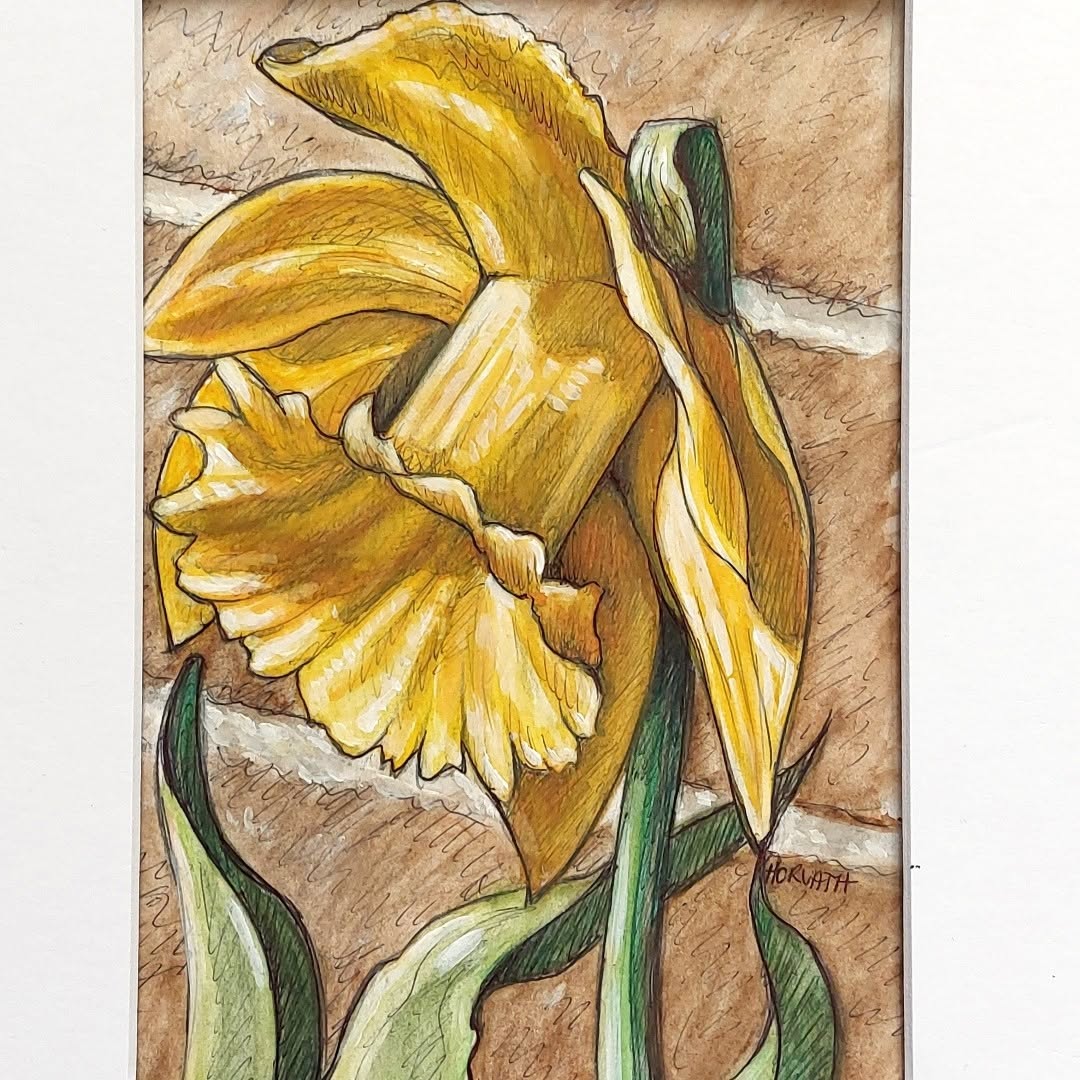
source @cathyhorvathbuchanan
Daffodils are bright, cheerful flowers that bring a touch of spring wherever they bloom. Their trumpet-shaped petals and vibrant yellow color make them a favorite subject for artists looking to experiment with color and composition. Drawing daffodils provides an opportunity to practice bold shapes and clean lines, as the petals often have a smooth, flowing form. The bright yellow petals contrasted with the green stems and leaves offer a dynamic visual, allowing you to focus on color contrasts and gradients. Daffodils are not only fun to draw, but their lively nature makes them a perfect addition to any springtime artwork or as a gift for loved ones.
18. Calla Lily: Elegant and Sleek
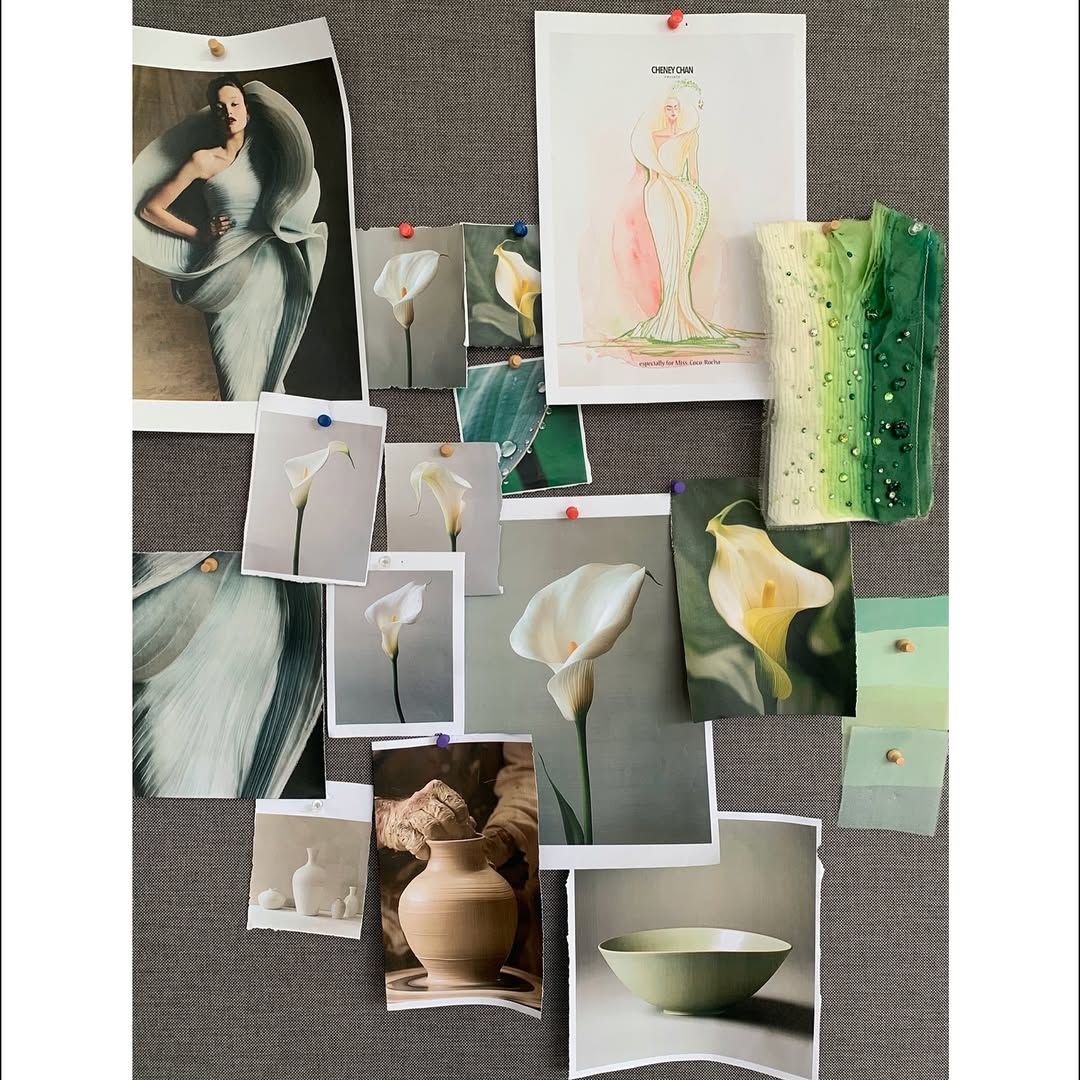
source @cheneychanofficial
The calla lily is a striking, elegant flower with smooth, sleek petals that curve gracefully outward. The unique shape of the calla lily provides an opportunity to practice fluid, graceful lines and controlled shading. Its simple form and minimalist beauty make it a perfect flower to draw for those who enjoy working with sleek, clean lines. The calla lily’s long, slender stem and smooth curves allow for a sophisticated, elegant feel in your artwork. Drawing this flower can help refine your technique in capturing both form and texture, making it an excellent subject for any level of artist.
19. Cactus Flower: Unique and Stunning
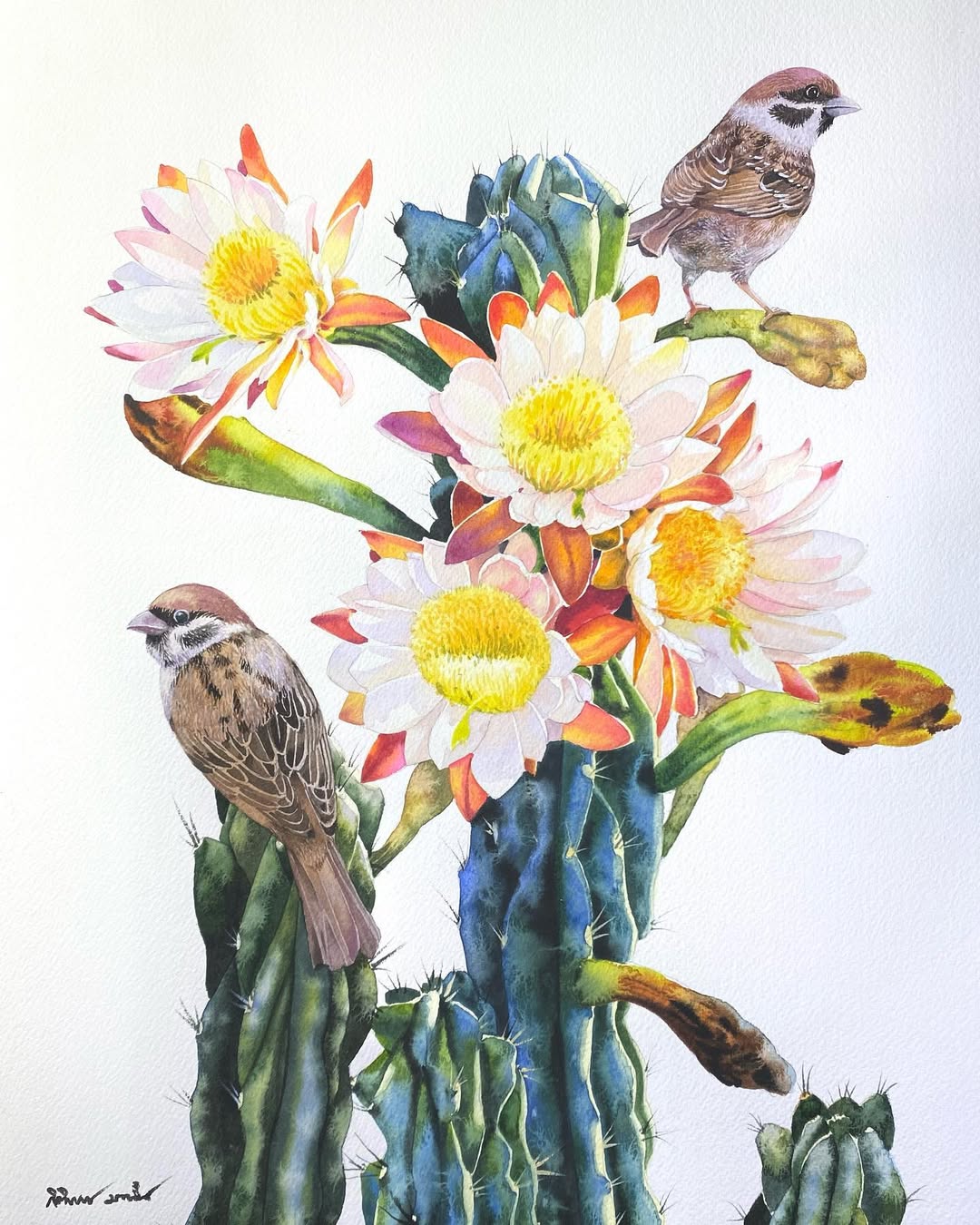
source @kitipong_maksin_artist
Cactus flowers are unusual and stunning, often blooming in bright, unexpected colors like vibrant reds, oranges, and yellows. These flowers grow from the tough, spiny cactus, providing a striking contrast between softness and sharpness. Drawing cactus flowers allows you to practice texture and contrast, as the soft, delicate petals of the flower juxtapose with the harsh, spiny surface of the cactus. This flower’s bold color palette gives you an opportunity to experiment with blending vibrant hues and adding contrast with the cactus’s muted, greenish skin. Cactus flowers can bloom in various shapes, from round, cup-like forms to spiky blooms, offering plenty of variety for practice. As an artist, the key challenge here is balancing the natural harshness of the cactus with the delicate beauty of the flower, creating a harmonious yet dynamic composition.
20. Zinnia: Bright and Bold
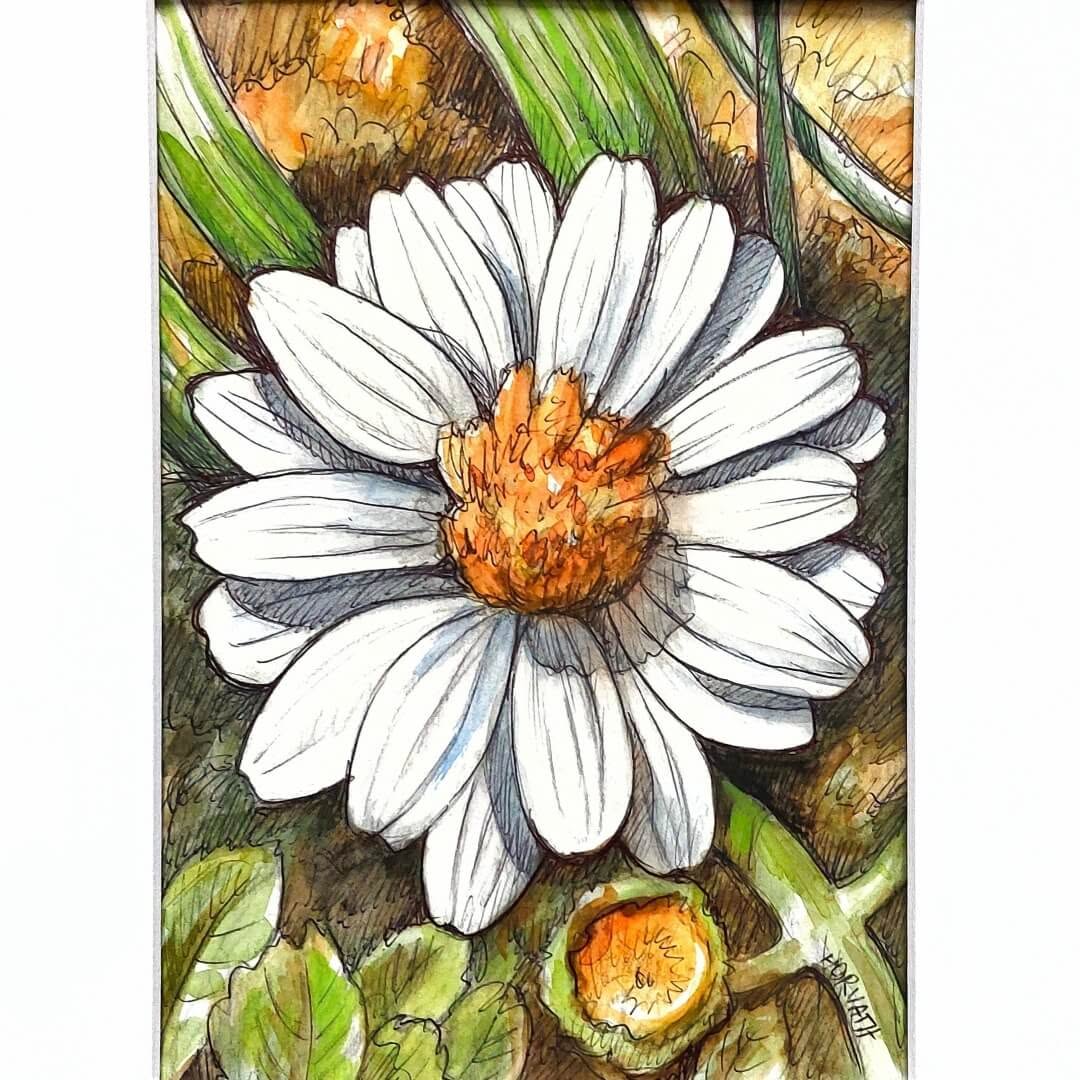
source @cathyhorvathbuchanan
Zinnias are cheerful, colorful flowers with a bold, almost geometric structure that makes them an exciting subject to draw. Known for their vibrant hues—ranging from pinks to oranges to reds—zinnias offer a fantastic opportunity to explore bold color choices and intricate petal details. The flower’s unique, compact shape and layered petals give artists a chance to practice depth and texture, as well as refining their shading techniques. Zinnia flowers have a distinct, almost sculptural look, with petals that radiate out from a central disk. As you draw, try focusing on creating a sense of volume by layering your shading to bring out the dimensionality of the petals. This flower also makes an excellent subject for experimenting with color gradients and complementary color schemes, making your artwork pop.
21. Dahlia: Intricate and Full
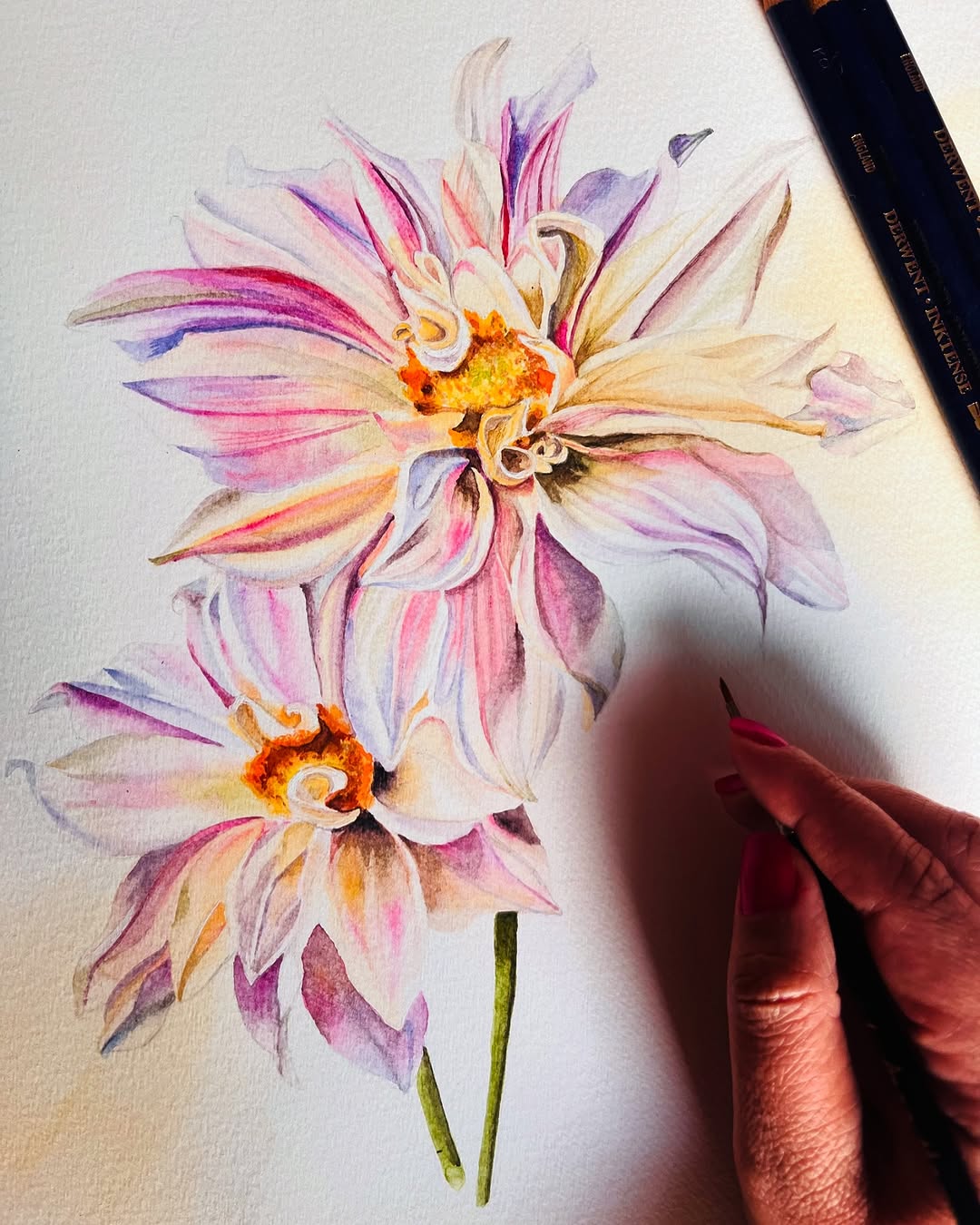
source @whatsurcolorstory
Dahlias are a luxurious flower known for their full, intricate blossoms that are a feast for the eyes. With their multi-layered petals that vary in size and texture, drawing a dahlia provides a rewarding challenge for artists seeking to practice detailing. The flower’s complexity, with petals that curl, overlap, and twist, allows you to focus on creating texture and capturing a sense of movement within the composition. Dahlias come in a wide range of colors, from deep purples and reds to bright pinks and oranges, offering a broad palette for color experimentation. To effectively capture the essence of a dahlia, focus on the contrast between the rich, deep shadows and the lighter areas of the flower. Dahlia drawings are perfect for honing your skills in shading and creating depth, making them ideal for more advanced artists looking to take their floral drawing to the next level.
22. Aster: Gentle and Symmetrical
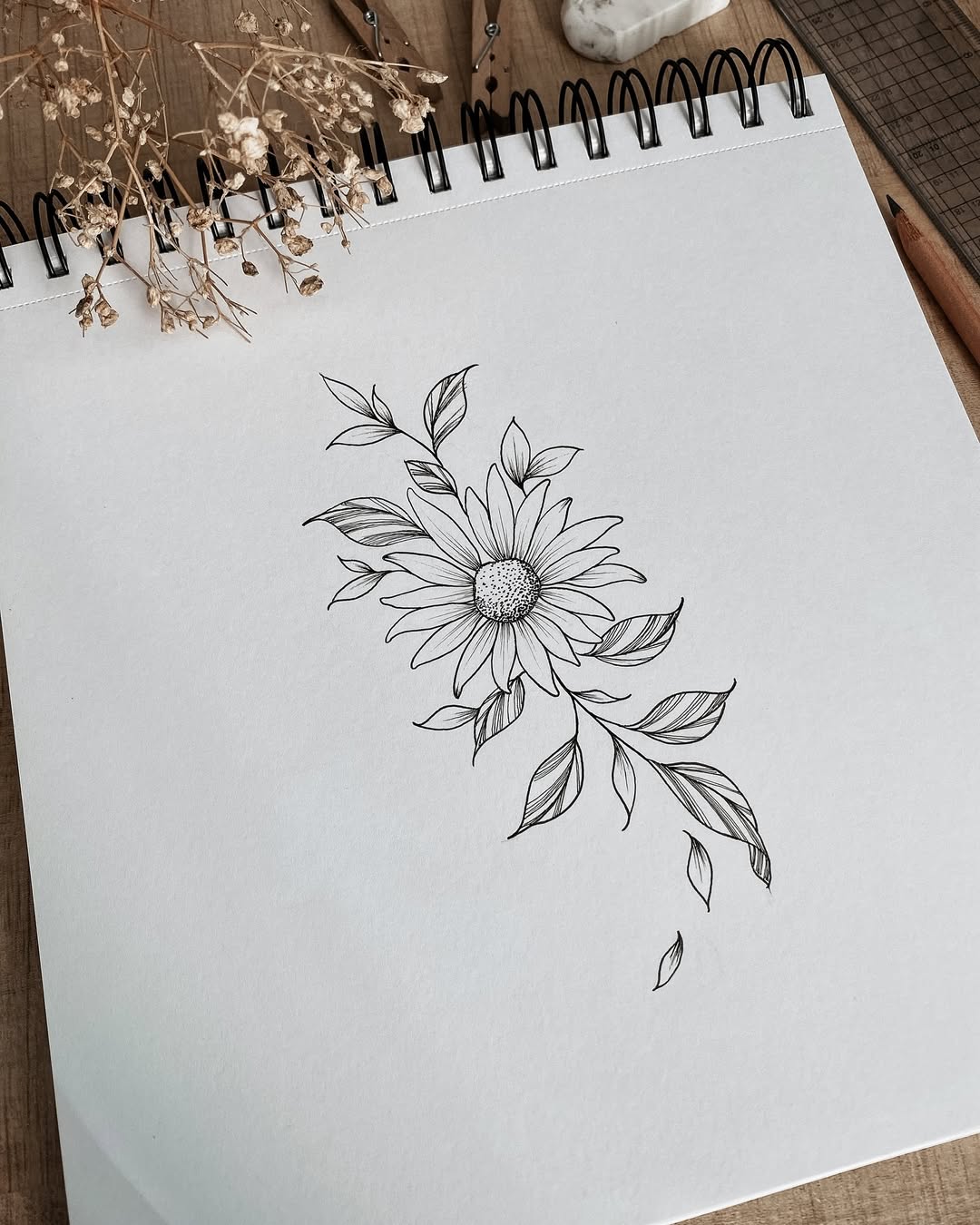
sopurce @seraseah
Asters are delicate, star-shaped flowers with a symmetrical structure that is both pleasing to the eye and easy to replicate. Their thin, spiky petals are arranged in a circular pattern around a central cluster of yellow stamens, offering a great opportunity to practice precision and symmetry. The gentle hues of purple, blue, or pink that asters typically come in give artists the chance to play with soft shading techniques to create a delicate, airy feel. When drawing an aster, focus on getting the symmetry just right and pay attention to the fine details in the inner circle of the flower. Asters make great subjects for practicing both fine line work and shading, and their soft colors can be enhanced with gentle gradient techniques to give the flower a subtle, luminous quality.
23. Fuchsia: Elegant and Unique
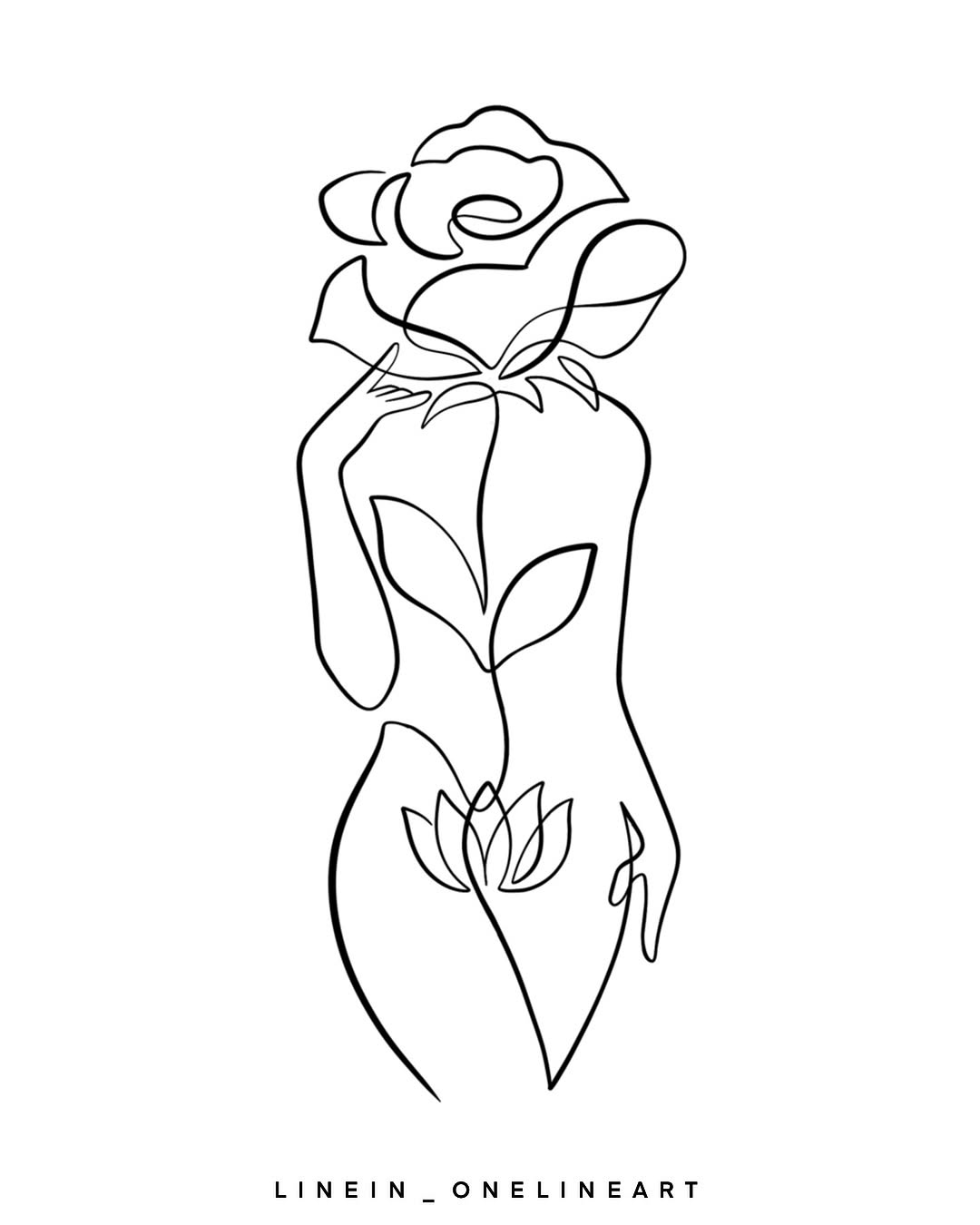
source @linein_onelineart
Fuchsia flowers are known for their distinct, drop-like shape and vibrant, contrasting colors—ranging from deep purples to bright pinks and whites. These flowers hang gracefully, often in clusters, from long, slender stems, offering a chance to capture movement and flow in your drawings. Fuchsias have an elegant, almost chandelier-like appearance, making them ideal for practicing organic shapes and natural draping lines. Their petal structure, with delicate layers that curve outward and inward, provides an opportunity to focus on the layering and delicate shading techniques. Whether you’re drawing a single fuchsia or a bouquet, the bold contrast between the outer petals and the inner stamen offers a striking visual for adding depth and dimension to your work. The fuchsia’s unique, dangling shape also challenges you to work on creating dynamic compositions, with petals that appear to move in the breeze.
24. Hibiscus: Bold and Beautiful
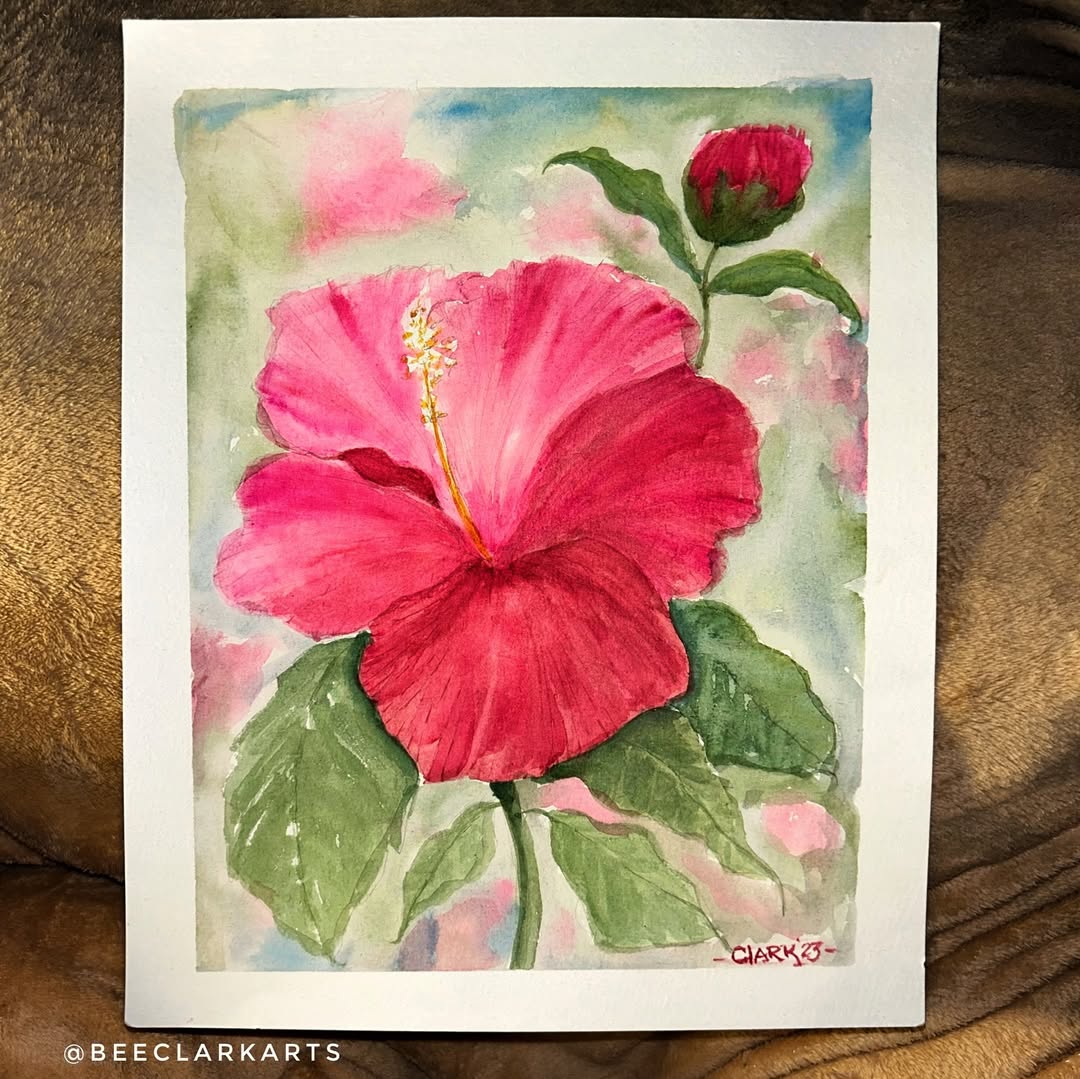
source @beeclarkarts
The hibiscus flower is a strikingly bold and beautiful flower with large, trumpet-shaped petals that come in an array of vivid colors, from deep reds to bright pinks and even oranges and yellows. This tropical bloom is known for its impressive size and bold presence, making it a fantastic subject for drawing. When drawing hibiscuses, you’ll have the opportunity to experiment with both large-scale shading and intricate details. The wide, open petals of the hibiscus create a perfect canvas to practice gradation of color and texture, especially around the edges where the petals curl slightly. The flower’s stamen, which protrudes dramatically from the center, adds another layer of detail to focus on. Artists can have fun exploring vibrant color choices, blending tones, and enhancing the natural contrast between the soft petals and the hard, structured stamen. Drawing hibiscus flowers allows you to work on creating a sense of volume, highlighting both the fullness of the petals and the fine, delicate details in the central parts of the flower.
25. Cherry Blossom: Soft and Whimsical
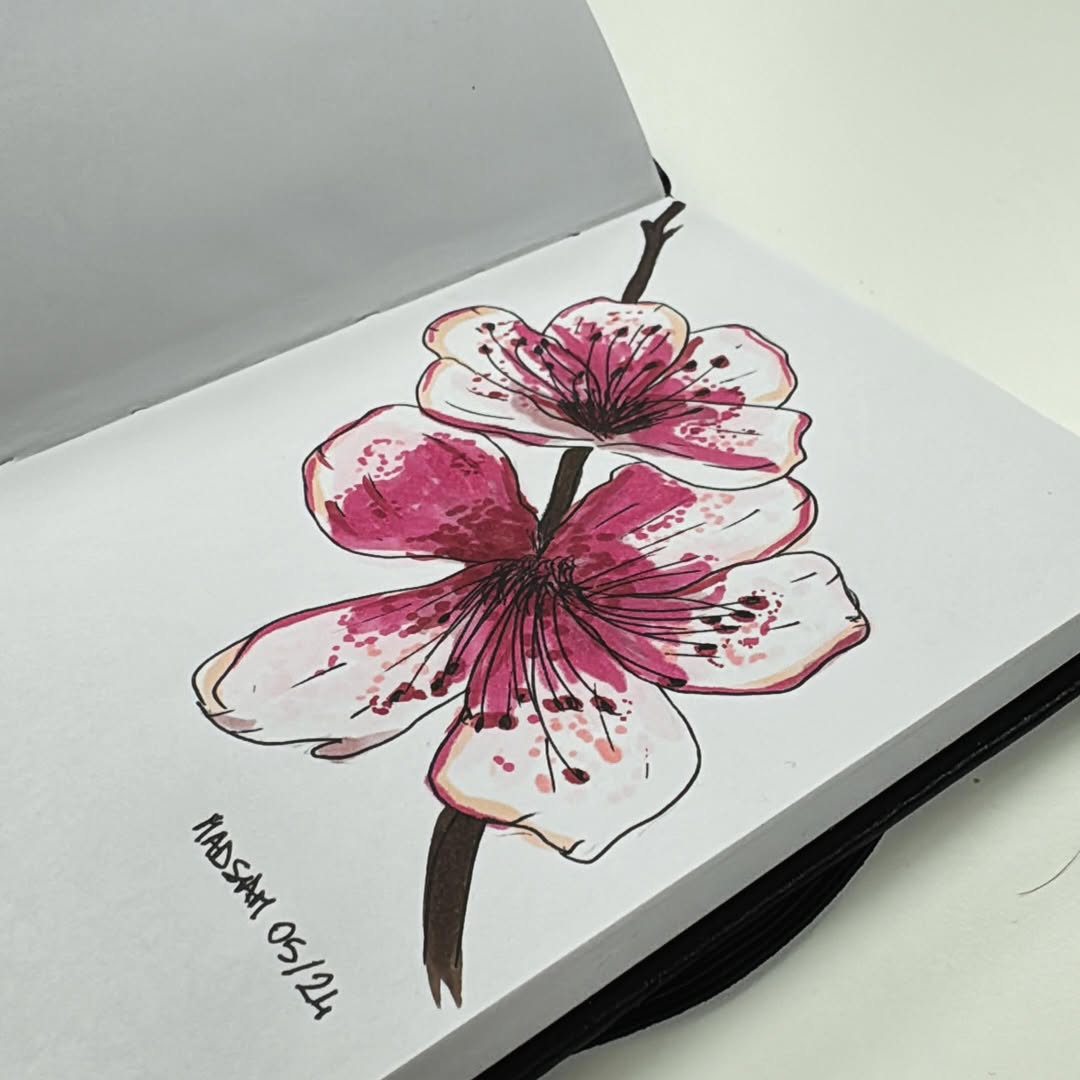
source @madsam_designs
Cherry blossoms are iconic flowers that are soft, whimsical, and full of delicate beauty. Known for their light pink or white petals and soft, fleeting nature, cherry blossoms have become a symbol of renewal and the transient beauty of life. These flowers are perfect for practicing subtle, soft shading techniques and capturing the delicate nature of petals. The small, clustered blossoms typically grow in clusters, creating a gentle sense of movement and flow in your artwork. Drawing cherry blossoms allows you to explore both the lightness of the petals and the structure of the branches they grow from. Their soft colors, coupled with their light, airy petals, offer a great opportunity to experiment with light washes and watercolors. Whether drawing individual blossoms or entire cherry blossom branches, focusing on the graceful curves of the petals and the contrast between the delicate flower and the sturdy branch will help bring your artwork to life. The cherry blossom is an ideal flower for practicing light, airy strokes and mastering the delicate balance between structure and fluidity.




